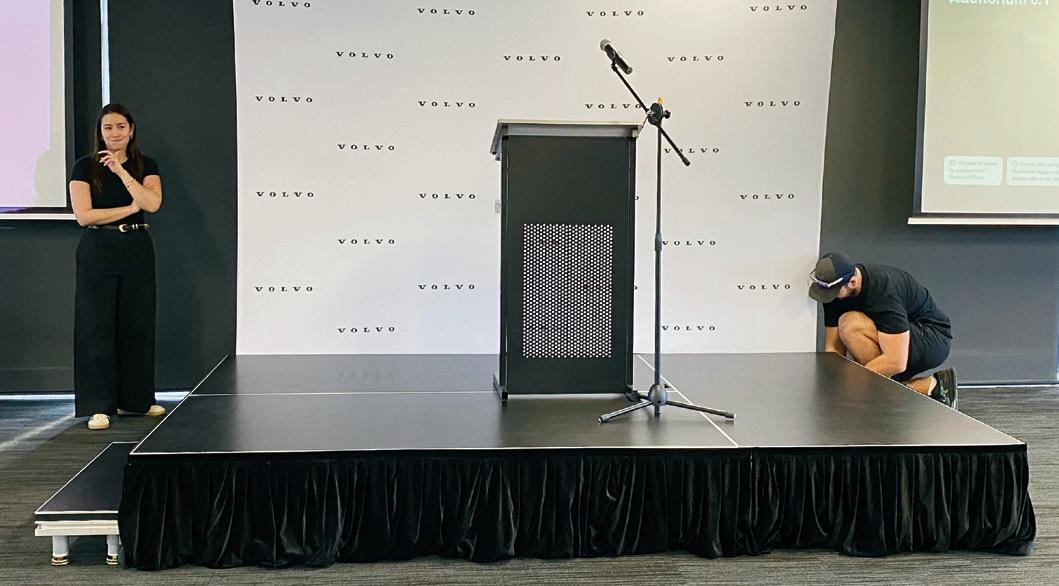








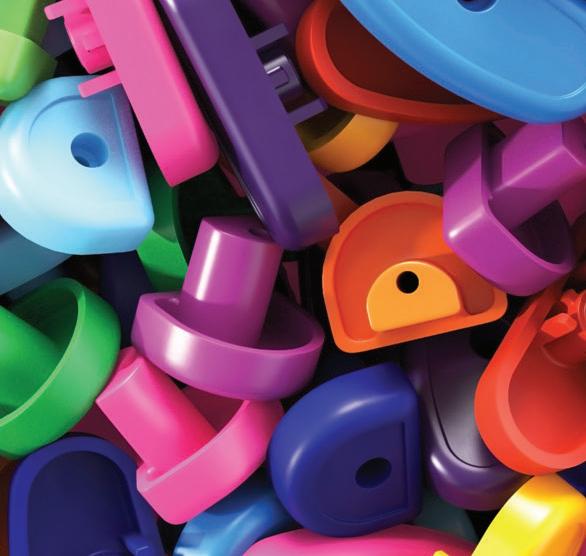
















































































School News is distributed to primary, secondary and intermediate schools throughout Australia by Multimedia Publications Pty Limited.
The views and images expressed in School News do not necessarily reflect the views of the publisher. The information contained in School News is intended to act as a guide only, the publisher, authors and editors expressly disclaim all liability for the results of action taken or not taken on the basis of information contained herein. We recommend professional advice is sought before making important business decisions.
The publisher reserves the right to refuse to publish or to republish without any explanation for such action. The publisher, its employees and agents will endeavour to place and reproduce advertisements as requested but takes no responsibility for omission, delay, error in transmission, production deficiency, alteration of misplacement. The advertiser must notify the publisher of any errors as soon as they appear, otherwise the publisher accepts no responsibility for republishing such advertisements. If advertising copy does not arrive by the copy deadline the publisher reserves the right to repeat existing material.
Any mention of a product, service or supplier in editorial is not indicative of any endorsement by the author, editor or publisher. Although the publisher, editor and authors do all they can to ensure accuracy in all editorial content, readers are advised to fact check for themselves, any opinion or statement made by a reporter, editor, columnist, contributor, interviewee, supplier or any other entity involved before making judgements or decisions based on the materials contained herein.
School News its publisher, editor and staff, is not responsible for and does not accept liability for any damages, defamation or other consequences (including but not limited to revenue and/or profit loss) claimed to have occurred as the result of anything contained within this publication, to the extent permitted by law.
Advertisers and Advertising Agents warrant to the publisher that any advertising material placed is in no way an infringement of any copyright or other right and does not breach confidence, is not defamatory, libellous or unlawful, does not slander title, does not contain anything obscene or indecent and does not infringe the Consumer Guarantees Act or other laws, regulations or statutes. Moreover, advertisers or advertising agents agree to indemnify the publisher and its agents against any claims, demands, proceedings, damages, costs including legal costs or other costs or expenses properly incurred, penalties, judgements, occasioned to the publisher in consequence of any breach of the above warranties.
The Multimedia Publications Pty Limited team acknowledges Aboriginal and Torres Strait Islander peoples as the First Australians and Traditional Custodians of the lands upon which we gather, work, and publish. We want to pay our respects to Elders past, present, and future, who continue cultural, educational, and spiritual connections to Country. © 2025 Multimedia Publications Pty Ltd. It is an infringement of copyright to reproduce in any way all or part of this publication without the written consent of the publisher.
EDITOR Gemma Easton editor@school-news.com.au
INDUSTRY REPORTERS
Naomii Seah, Sarah Davison and Shannon Meyerkort
PRODUCTION Richard McGill
ADVERTISING Dee Dawson advertising@school-news.com.au
CONTRIBUTORS
Kylie McCullah & Daniela Falecki
As I type this, CoPilot is hovering in the margin, itching to be called upon for assistance.
AI has become an inescapable part of our lives, and everyday it seems another task is being outsourced to the robots. While conversations about AI in the classroom originally centred on how to stop it, now the challenge is to implement it safely and e ectively to enhance learning and teaching. As well, students and teachers need to have the necessary digital literacy to evaluate when AI is helping and when it’s a hinderance.
In our Term 3 Special Report, we trace the origins of AI in the classroom, look at the benefits and potential pitfalls, and discuss

Gemma Easton, Editor, SchoolNews editor@school-news.com.au
how to prepare teachers and students to use AI. Striking a balance between the role of humans and the role of AI in the classroom is important, and AI should remain a support, rather than supplant, for teachers.
For our profile this edition, we visit Jolimont Primary School in Perth, WA and find out
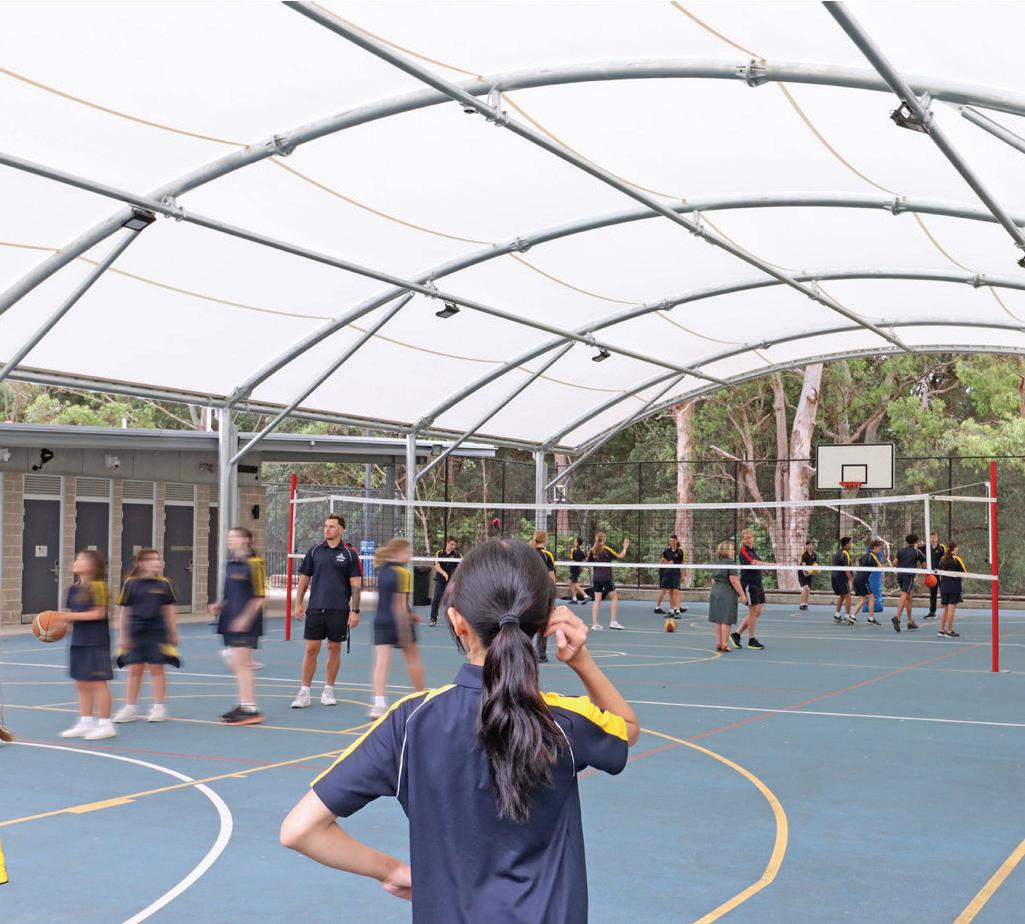

about their innovative spelling program. Wanting a di erent, less boring way to teach spelling to upper-primary students, the team at Jolimont worked with Dyslexia-Speld Foundation to pilot a program which sees students learn the root or base of a word—often from Latin— which helps them to recognise, understand and spell related words. Students have taken to the program enthusiastically, with some reporting they feel very clever learning Latin and Anglo-Saxon roots! The program harnesses the power of the stories surrounding words to transform the way students learn, remember and spell.
With the weather set to warm up around the country, now might be the right time to assess your school’s drinking water facilities. Bubblers that o er only a weak
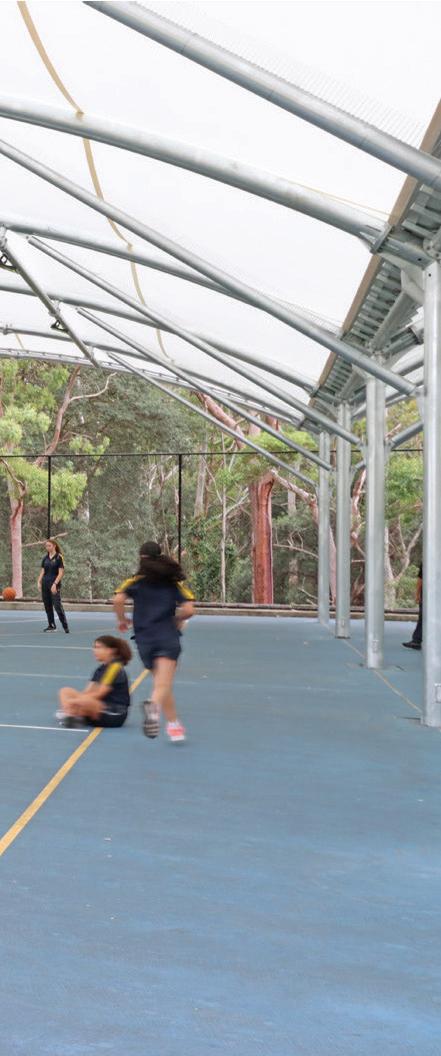
trickle of water, or that can’t accommodate a water bottle to be refilled are unlikely to appeal to students. With evidence showing that even mild dehydration can a ect focus, concentration and mood, it’s important to keep students hydrated throughout the school day. We explore the latest innovations in practical, appealing water fountains to keep students away from sugary drinks.
Also in this edition, we hear from experts on how to support student and teacher wellbeing, explore the benefits of excursions to zoos and wildlife parks, and find out how to create an inclusive playground.
Thank you for reading this edition of School News. All the very best for Term 3. Gemma







By Gemma Easton , Editor
AI is not new—it’s been ubiquitous in our lives for decades. The autocorrect on your mobile phone, the helpful suggestions offered up by Siri, Alexa and Google, applying digital filters to our photos, and the recommendations supplied by streaming services are all examples of AI at work.
Similarly, the classroom has a long association with AI, with Kahoot! quizzes, virtual reality headsets, text to speech transcription tools and many other AI processes used daily. In recent years, though, generative AI (GenAI)—that is, the ability for AI to generate words, text and other content in response to a series of prompts—has seen more and more tasks and areas of our lives being infiltrated, assisted, or completed by AI.
The education sector is not immune. While the conversation around AI in education used to
be about whether AI should be used in the classroom, it has now shifted to how, where and when it will be used. Much of the discussion around AI for students has focussed on universities, with little analysis of how it could impact school students.
For many students today, AI literacy will be an essential workready skill. During their schooling, they must learn to use AI safely, eff ectively and ethically, and teachers need to be equipped to take the lead in their education. This means improved digital literacy is a key skill for teachers today and into the future.
Initial reactions to GenAI were alarmist. Calls to ban it from schools entirely were loud, citing risks of students cheating, or teaching being entirely outsourced to the robots. With the capabilities and capacity of GenAI moving at lightning speed, attitudes needed to be adjusted quickly, to keep pace. Education departments and advocacy groups embraced GenAI and worked to ensure it was used safely.
In November 2023, the Federal Government released a framework
for generative AI in schools, noting that AI had “great potential” to assist learning and teaching, and reduce administrative workload in Australian schools. The framework aims to assist schools to navigate the complex privacy, security and ethical considerations GenAI raises.
Risks associated with using AI are also acknowledged in the framework, including the potential for errors and algorithmic bias in generative AI content; the use of generative AI for inappropriate purposes, for example to undermine the integrity of student assessments or discriminate against individuals or groups; or the misuse of confidential or personal information.
The framework paved the way for GenAI to be formally rolled out in all Australian schools.
South Australia was the first state to normalise GenAI in the classroom, rolling out a trial of EdChat—the South Australian Government’s generative AI chatbot—in 2023. Developed in partnership with Microsoft, EdChat uses the same model as ChatGPT. The government AI tool, though, boasts extra safety features, including improved data security and protections to

stop students from accessing inappropriate content.
Researchers from the Centre for Change and Complexity in Learning (C3L) at the University of South Australia evaluated the tool using data from 700 students and 90 teachers. Teachers reported feeling safter using EdChat than other tools like Chat GPT, because student data is not being used to train the GenAI. They also highlighted the benefits of the tool, reporting it saved them time developing lesson plans and learning materials, and allowed them more time in the classroom with students. EdChat was also used to prepare personalised learning activities for students, with EdChat able to provide personalised feedback or support when teachers were not around.
NSWEduChat was introduced to NSW classrooms from Term 1 2024, with a trial in 16 schools. According to the NSW education department, EdChat can be used by teachers to enhance their AI skills and digital literacy. While still in its trial phase, student use of EdChat was restricted due to concerns about data privacy, student safety, and the potential exposure to harmful or explicit content.


In August 2024, a federal parliamentary enquiry recommended that the Australian Government consider making the use of GenAI in education a national priority, and maximise the opportunities for GenAI education-specific tools, and for these tools to be integrated into the school curriculum and practice. Importantly, the inquiry recommended GenAI tools for education be trained on datasets based on the Australian Curriculum, to ensure inputs reflect an Australian context and are inclusive of gender and disability.
Discussions in the education sector frequently focus on the mounting workload for teachers, with administrative processes leaving teachers feeling overworked, and taking time away from the classroom. In turn, this is impacting teacher attrition, with many school leaders reporting it is difficult to attract and retain teachers.
GenAI may be useful in alleviating this burden and helping teachers reclaim time. Recent research indicates that automating some processes like lesson planning, assessment generation and marking, and attendance tracking can provide continuity of learning to students, particularly during times of disruption. In some contexts, low-cost interventions like chatbots delivered through messaging platforms have been shown to support student learning and wellbeing.
AI-enhanced assessments may also benefit students. Speaking at a 2025 ACER Research
Conference, Professor Therese N Hopfenbeck—an expert in student assessment—outlined that AI-enhanced assessment could bring benefits for personalised learning, through adaptive testing that adjusts difficulty based on student responses, and the ability to track individual student progress over time.
Professor Hopfenbeck also pointed to her research which indicated that assessment feedback could be enhanced by AI to improve student literacy. Teachers surveyed by Professor Hopfenbeck said they would not have been able to provide so much rich feedback to students without AI assistance. Students were impressed by how the feedback helped to improve their work.
In Australia, some NAPLAN tests are already adaptive. The online reading, numeracy and conventions of language use tests automatically adapt to a student’s performance and ask questions that match the student’s achievement level. The National Assessment Program says this allows students to demonstrate their knowledge and encourages students to stay engaged with the test. Additionally, tailored testing provides teachers and schools more targeted and detailed information on students’ performance in the assessment.
While there may be benefits, we are all acutely aware there are many pitfalls to using GenAI in the classroom, as well as elsewhere in our lives. Importantly, AI must be used to support and augment in the education space, rather than
replace human teachers. This means teachers need to be well prepared to leverage AI tools.
The 2023 Global Education Monitoring Report found that support for teachers to improve their digital skills is limited, and that many lack the confidence to use digital tools. Teachers also cited the lack of access to digital infrastructure as a significant barrier to supporting student learning, particularly in lower decile areas. Existing digital divides could be exacerbated by extended AI use, leaving students with access to limited digital infrastructure further behind.
Digital literacy for teachers is important so educators can effectively integrate new AI tools into teaching practices. Internationally, data reveals that many teachers have limited understanding when it comes to integrating technology into their classrooms. Greater investment may be needed in ongoing professional development to make sure teachers remain confident using AI and other technology. Given the rapid evolution of the tech space, PD needs to
be constantly reevaluated to ensure it remains cutting edge.
Perhaps the greatest challenge for AI in the classroom is striking the balance between the role of humans and AI tools in teaching, learning and administrative processes. Educators are responsible for working with AI ‘assistants’ to support their own professional outcomes, and students. Making sure AI is used ethically and given appropriate tasks to assist human inputs, however, should not be the sole responsibility of individual school leaders or teachers.
An ACER report, released in January this year, said co-creation and co-design approaches could enhance AI outcomes. This should involve key stakeholders, including students, teachers, technical experts, parents, and school leaders.
AI will continue to evolve, and its influence on the education sector looks set to expand. While student use should be encouraged, teachers must remain the guardians of education, guiding students to use AI tools to support rather than supplant classroom teaching. Helping to recognise and address biases, spot misinformation, find more reliable sources and offer solutions when AI can’t are key roles for educators. With the time saving potential of AI to automate administrative tasks, more opportunities may be available for ongoing professional development to make teachers more digitally literate and confident using AI tools.
Arming teachers with the necessary digital training and support, and involving education stakeholders in the design process, could unlock the full potential of AI in the classroom, and help reimagine education.

When we talk about student and educator wellbeing, it’s easy to focus on big-picture things like learning programs, mental health support, or school culture, etc., but often, it’s the small everyday things that quietly play a big part – like clean hands, fresh washroom spaces, and the comfort of knowing basic needs are being met.
At Sorbent Solaris Paper, we’re proud to support schools with products that help make those everyday moments better. Our Sorbent Professional and Livi ranges – featuring toilet tissues, facial tissues, hand towels, soaps and sanitisers are designed to keep school environments clean, comfortable, and ready for learning.
A soft tissue when someone’s feeling under the weather. A reliable hand
towel after washing up before lunch.
A clean, well-stocked washroom that helps students and staff feel looked after. These might seem small, but they all add up to create a space where people feel safe, supported, and able to focus on what matters.
We also know students care deeply about the planet – so we’re proud that our products are PEFC-certified, supporting responsible forestry and sustainable practices.
Wellbeing isn’t just one person’s job. It’s something we all contribute to, in big ways and small. And if our products can help make someone’s day a litt le easier, cleaner, or more comfortable, that we know we’re doing something right.
Sorbent Professional & Livi –bringing comfort, hygiene, and care to classrooms across Australia.
Because every student and sta deserve to feel supported – every single day.


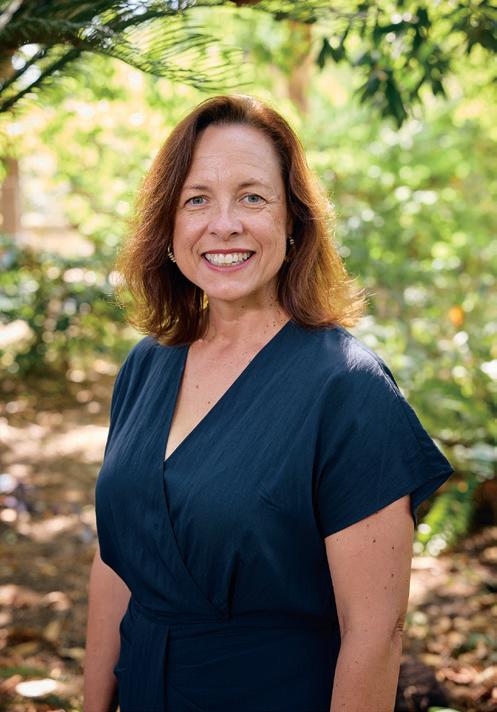
By Kylie McCullah , Principal, Loreto College Marryatville, SA
As adolescent mental health challenges rise and academic pressures intensify, wellbeing is no longer a nice-to-have in schools; it is essential. Principal Kylie McCullah shares how Loreto College Marryatville is leading the way through its award-winning SEAD program, proving that when girls are explicitly taught to thrive socially, emotionally and academically, they excel in every dimension of life.
There is a growing truth that schools can no longer ignore: academic success is not enough. In an age of anxiety, comparison culture and digital overload, students, especially girls, need more than content
knowledge to thrive. They need tools for strength, empathy, regulation, identity, and confidence. They need to know how to navigate the world, not just understand it. And this cannot be left to chance.
As Principal of Loreto College Marryatville, an all-girls independent school in South Australia, I have seen the transformative impact of what happens when wellbeing is not assumed but taught—explicitly and thoughtfully. This is not a matter of feel-good initiatives or one-off assemblies; it is core educational business!
In all-girls schools, we see both the potential and the pressure that young women face. We witness their leadership, their drive, their empathy, and also their self-doubt, perfectionism, and fear of failure. Girls are statistically more likely to internalise stress, overachieve at the expense of their wellbeing,

This
is not a matter of feel-good initiatives or one-off assemblies; it is core educational business
and struggle with imposter syndrome. They often aim for excellence, but fear falling short.
This is compounded by a world where social media curates idealised versions of life, appearance, and success. Girls absorb powerful messages about who they are supposed to be, how they should look, and what they must achieve.
That is why we teach wellbeing explicitly. Because when girls are taught to understand themselves, value their voices, and develop healthy
emotional habits, they do not just cope—they flourish.
At Loreto College Marryatville, our Social, Emotional and Academic Development (SEAD) program is not an adjunct; it is foundational. SEAD recognises that emotional health, strong relationships, and academic confidence are all deeply intertwined. When one is neglected, all suff er.

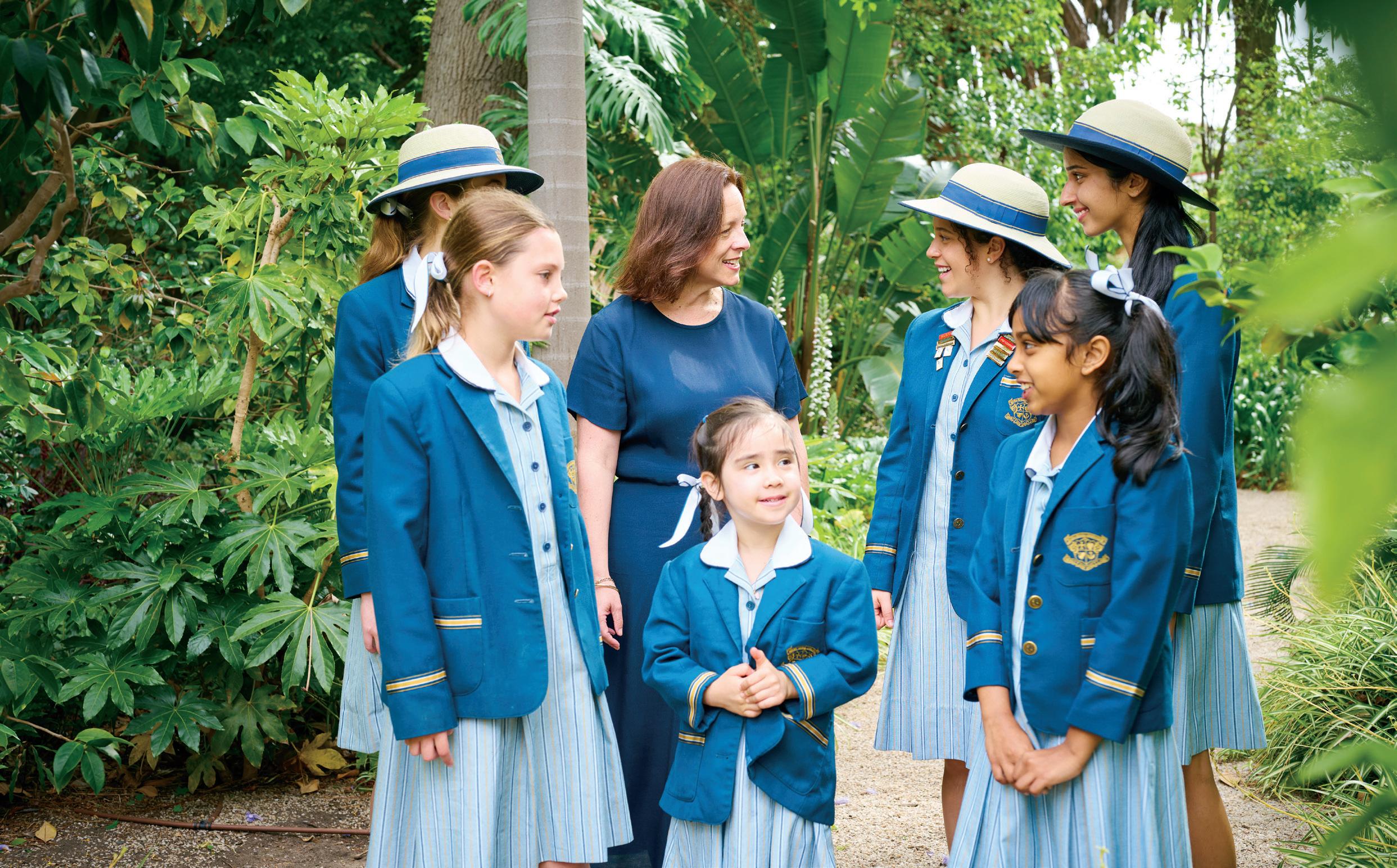
The SEAD program was born out of a simple but powerful conviction: that student wellbeing deserves the same rigour, attention and planning as academic subjects. Designed to be delivered weekly from ELC to Year 12, SEAD provides age-appropriate, researchinformed lessons that empower our students to understand their emotions, their development and their social world.
The SEAD curriculum is designed to grow with our students, covering key themes
such as identity, emotional intelligence, leadership and voice, healthy relationships, academic strategies, responsible online engagement, and preparation for life beyond school. Each topic is carefully selected to build a holistic sense of self and equip girls with the tools they need to thrive both personally and academically.
The program is supported by professional development for staff, parent education sessions, and embedded practices across the school day.
This year, SEAD was nationally recognised with an Excellence in Wellbeing Education Award for the third time. But its true success is not in accolades—it’s in the stories of our students and the benefit it brings them.
As one Year 12 student shared: “Loreto creates a safe, happy, and welcoming environment where everyone feels valued and encouraged to be themselves. It inspires confidence and encourages you to follow your aspirations while supporting and uplifting others to do the same.”

Wellbeing is often described as a school’s hidden curriculum. But at Loreto, we believe it should be anything but hidden. If we want students to develop courage, compassion, and confidence, we must teach these skills with the same clarity we use to teach algebra or Shakespeare.
Girls need explicit permission, and language, to name their feelings, assert their needs, and rewrite unhelpful selfnarratives. They benefit from structured opportunities to reflect, challenge stereotypes, and build social-emotional skills with intent.
Consider the topic of selfadvocacy. Many girls hesitate to speak up, whether to challenge unfairness, seek help, or express a boundary. But after a SEAD lesson on assertiveness, one Year 11 student commented: “Loreto encourages us to take risks, share our ideas openly, and develop our leadership skills in a way that feels authentic and empowering. That is the power of explicit wellbeing education.

SEAD is not just a program— it is a culture. And culture starts with staff. At Loreto, we invest in our educators as the frontline of student wellbeing. Through training including trauma-informed practice and adolescent development, our staff are equipped to recognise distress early and respond with care and consistency.
We also focus on adult wellbeing. A staff culture of kindness, reflection, and shared responsibility has a ripple effect. Students pick up on authenticity. They notice when a teacher genuinely listens, when expectations are clear, and when feedback is given with belief in their potential.
A Year 11 student recently commented: “Loreto provides an amazingly supportive environment in which all students are actively encouraged to reach their full potential.”
One of the cornerstones of SEAD’s success is our use of data. Measuring wellbeing
may seem difficult, but it’s not optional. At Loreto College Marryatville, we use regular student surveys, wellbeing check-ins, and behavioural data to track how students are doing and what they need.
In addition to the weekly Pulse surveys, we conduct two annual wellbeing surveys to better understand and support our students. The Social-Emotional Wellbeing (SEW) survey by ACER is completed by all year levels, while students in Years 10 to 12 also take part in the national Mission Australia Youth Survey. These surveys gather valuable insights into students’ confidence, emotional regulation, sense of belonging, and willingness to seek help. The results inform the development of SEAD lessons and help us monitor the impact of our wellbeing initiatives over time.
There is unique power in an all-girls education. Free from gendered classroom dynamics, girls in this setting are more likely to take intellectual risks, engage in leadership, and define success on their own terms.

But we must also be aware of the unique pressures that girls carry. At Loreto, we embrace both the opportunity and the obligation to speak directly to girls’ experiences. Our wellbeing curriculum includes frank discussions on body image, social comparison, imposter syndrome, and relational aggression. We normalise vulnerability and model emotional honesty.
As one Year 12 student shared: “There is an incredible sense of sisterhood at Loreto—it’s a space where I feel confident to be myself, free from pressure or comparison. I’ve grown not only academically, but personally, surrounded by girls who lift each other up instead of competing.”
And we ground it all in our Loreto values: justice, sincerity, verity, felicity and freedom. These values don’t sit on a poster, they guide our pedagogy, policies, and wellbeing care.
As a Year 12 student reflects, these values are deeply woven into the fabric of her school experience: “What I love most about Loreto is the strong sense of sisterhood and community, which I’ve come to deeply appreciate during my senior
years, especially as it fosters meaningful connections and personal growth. The school’s values of justice, sincerity, felicity, verity, and freedom have shaped my confidence and passion, encouraging me to break free from gender stereotypes and explore my interests through a wide range of empowering opportunities.
The world our students are inheriting is volatile, fast-paced, and complex. Students need more than content knowledge to thrive. They need emotional agility, ethical awareness, and the courage to care deeply—for themselves, for others, and for the world.
As a school, we cannot wait for issues to arise and react, our approach must be proactive. Wellbeing cannot be a fringe benefit. It must be deliberately taught, regularly evaluated, and deeply embedded in how we define a successful education.
At Loreto College Marryatville, we are proud to be leading this work through SEAD. We are committed to growing young women who are not only intellectually capable and confident, but emotionally intelligent, ethically grounded, and spiritually alive.
In the words of our foundress Mary Ward: “Women in time to come will do much.”
And when we teach them how to care for their minds, hearts, and souls, there is no limit to what they will do.
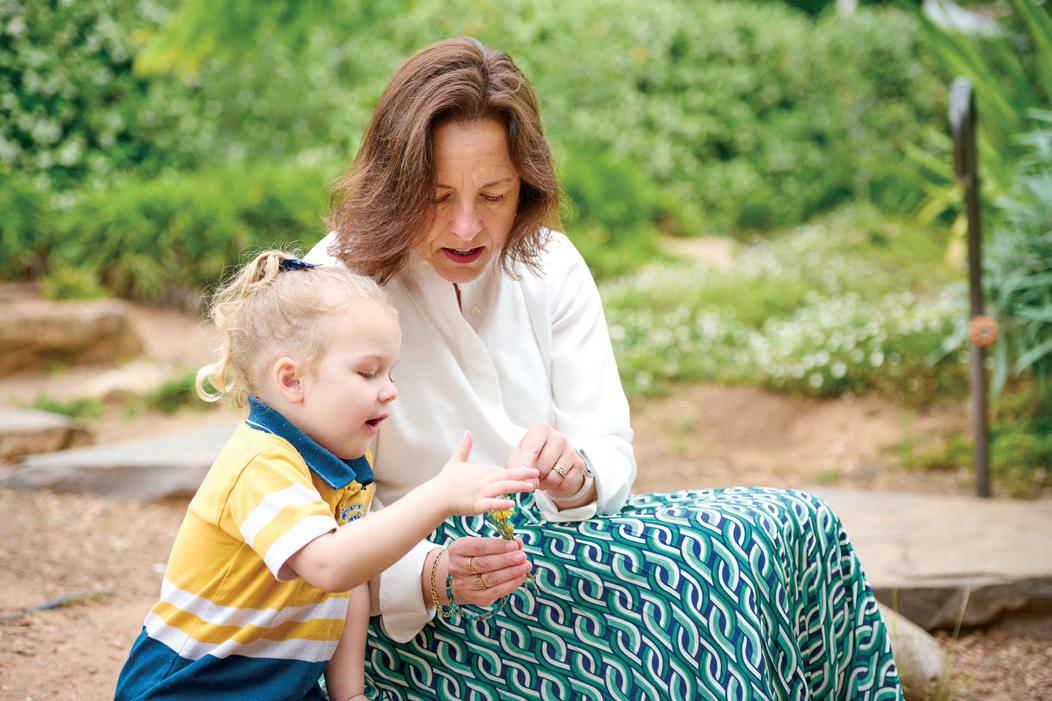


By Shannon Meyerkort, Industry Reporter
What is old becomes new again. Australian singer-songwriter Peter Allen sang about it in the 1970s. Mark Twain wrote about it in the late 1800s, and before that, it’s referenced in the bible:
“There is nothing new under the sun.”
So, it should not come as a surprise that the solution to a current literacy problem might be found in ancient languages. More specifically, the shortfall of today’s spelling programs can be rectified by understanding the morphology and etymology— or basis—of words.
In 2023, Barbara Iffla, Principal of Jolimont Primary School, an independent school of around 420 students in the western suburbs of Perth, hosted a whole school professional development day on the Science of Reading. Running the sessions was Mandy Nayton, CEO of Dyslexia-Speld Foundation

(DSF) Literacy and Clinical Services in Western Australia.
“During the event, staff interrogated Mandy about a different type of senior spelling program. They wanted something different to the more boring traditional programs, and explained their motivation and desire to find something new and engaging,” explained Ms Iffla.
“Mandy suggested that over the next year, we work with DSF to trial and provide feedback on the new morphology program they were designing called Word Origins.”
With over thirty different nationalities at the school, Jolimont has always been committed to fostering an
inclusive environment that values diversity. Staff are trained in several English as a second language strategies, and there have been specialist small group intervention classes for early years literacy learning for many years.
Yet, like in many primary settings across the country, while there are numerous high-quality phonics programs for the early years of primary education— where students are taught the relationship between phonemes and graphemes—staff realised that by the time students reached upper primary, there were few quality spelling programs that consolidated and then continued understanding the code.
“There wasn’t a specific problem as such, as student achievement was either at or above similar socioeconomic schools. However, several staff wondered if a more holistic approach to word formation and morphology might be more impactful and fun” explained Associate Principal Rebecca Hartman. “There are many highly structured spelling programs for older children, but we were after a program which was motivating
and engaging, not the run of the mill ‘open your books to page five’ type of experience.”
Being chosen to pilot the senior spelling program with a team of DSF literary specialists meant staff at Jolimont Primary collaborated in providing feedback on the program and training. Staff were also filmed for the Department’s Centre of Excellence, sharing their innovative practices with teachers statewide, and presenting a Jolimont perspective at the DSF Conference. It wasn’t the first time the school had been involved in high level learning, having been a Teacher Development School between 2016 and 2021 in the areas of maths, early childhood and HASS. Early literacy had always been a strong focus of the school, with even the P&C playing a significant role by funding new resources to support phonics. But Ms Iffla knew it was important to find an equally impactful program for the upper primary students, thus leading to the partnership with DSF to trial the new Word Origins program.

“It’s not enough to just practise spelling words and look them up in the dictionary,” said Ms Nayton who has been involved in the field of literacy acquisition, instruction, and research for more than 30 years. “We know from the research available that in order to spell and use a word well, we need to know it at a deep level, across multiple layers. This is known as lexical quality, and it’s evident that the better we know a word, the more likely it is that we will say it correctly, remember how to spell it and what it means, and use it confidently in our speech and writing.
“English is sometimes referred to as a promiscuous language
as we have happily ‘taken’ words from all over the world, adopting the spelling patterns of the original language. This makes spelling even more complex. There are currently thought to be over 350 written languages incorporated into English as we know it today,” Ms Nayton said.
Fortunately, over 60 percent of the words that students encounter in mid and upper primary are either Latin or Greek in origin. Both of these languages are regular, and hundreds of words can be built from one Latin root or base.
The pilot program at Jolimont was highly successful with positive feedback from both staff and

The real surprise has been for us how much our students have taken to morphology like ducks to water
students. “It has been amazing to partner to develop this program, and we are absolutely delighted with the result,” said Ms Hartman. “The real surprise has been for us how much our students have taken to morphology like ducks to water, over ‘traditional’ spelling programs.”
Ms Iffla believes that for senior students, understanding the building blocks of words—known as morphemes—is just as important as learning phonics is for juniors. Knowing morphemes makes it easier for students to recognise, understand
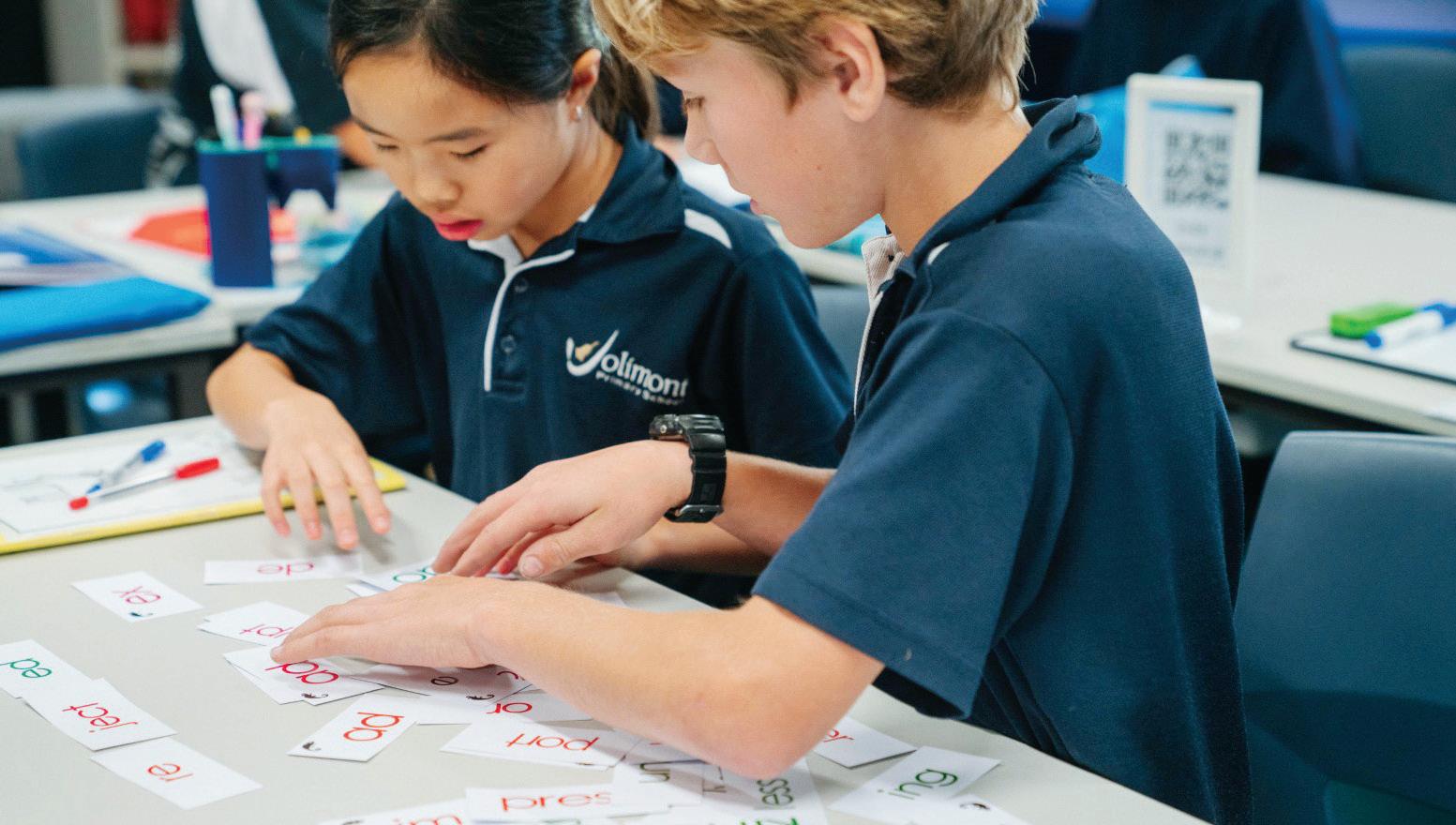
and spell related words.
Ms Nayton added: “Knowing the meaning of the words they are reading helps students to develop both phonic knowledge and fluency at a faster rate, and this knowledge of word meanings (the semantic value of a word) continues to play an essential role beyond phonics.”
While Word Origins was initially designed as a whole class, Tier 1 program for students in Years 3 through 6, it can be adapted for use as an intervention program for older, struggling students. The resources have been carefully designed to ensure they are suitable for older students who have gaps in their knowledge of orthography, morphology, etymology and vocabulary.
Ms Hartman said she can see that the program is working. “The results across the board are most impressive, as students with a Specific Learning Disorder (SLD) diagnosis have made as much progress as their classmates.”
Principal Iffla reiterated this, and highlighted students’ enthusiasm for Word Origins. “The students have been highly engaged and motivated and found the program to be fun yet challenging. It’s been wonderful to see their level of engagement and achievement level improve as their ability to build and understand complex morphology grows. We even had a student decorate his bike using morphology for the Ride to School Day.”

Some root word examples:
Latin:
Aqua (water)—aqueduct, aquatic, aquarium
Scribe/script (write)— prescribe, describe, manuscript, inscribe
Greek:
Bio (life)—biography, biology, biodegradable
Chrono (time)¬—chronological, synchronise, chronic
While there are existing resources that highlight the importance of teaching the multiple layers of language, few offer a structured, step-by-step guide




on how to effectively introduce these concepts. Even fewer provide daily lesson plans, instructional routines, and clear guidance for educators.
Word Origins was designed to fill this gap, offering educators a structured, systematic, and explicit approach to spelling and vocabulary instruction. At the same time, it prioritises engaging activities that keep students interested and motivated throughout the learning process.
Ms Iffla explained: “The teachers have thoroughly enjoyed the learning journey, collaborating with each other and DSF staff. They have found joy in watching the students have fun and understand





morphology and word origins.
“While it’s important to have a strong, motivated staff who are keen for change…the support from DSF, training and new resources have been fantastic, enabling a smooth transition and quick implementation of the program.”
Ms Nayton said that students have really enjoyed discovering the historical explanations that underlie English spelling.
“It’s like being a detective— students are discovering clues that will help them to unlock the mysteries of the English language. The feedback from both students and teachers has
been very positive. For example, one Year 6 student said: “I love morphology, and I feel super smart learning Latin and AngloSaxon roots!” while another student said: “I think learning about morphemes is a much more fun way to learn spelling than how we were before.”
By tapping into the rich history of language, students and teachers can uncover the stories behind words. As evidenced at Jolimont Primary, stories are a powerful tool for learning because they engage emotions, enhance memory and make complex ideas relatable. Word Origins harnesses the power of stories to transform the way students learn, remember… and spell.









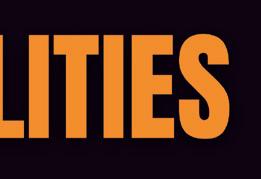


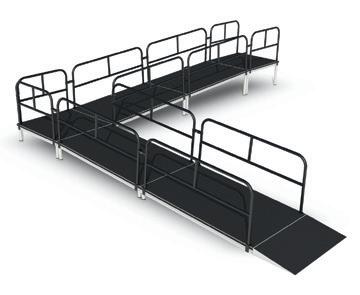
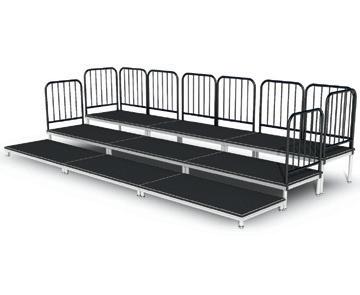

By Gemma Easton, Editor
Having an accessible and inclusive classroom is about more than just physical access to a space; it’s about a culture of inclusivity, where differences are not singled out and all students are respected.
A culture of inclusivity benefits everyone—students of all abilities will be encouraged to work together, think about and value different points of view, and be enthusiastic learners.
Communication is a simple first step, and all school staff should make sure they don’t talk down to students with disability or different learning needs, modelling respect for and to other students.
Sometimes, changes will need to be made to assessment or learning. Reasonable adjustments for students should be made in consultation with the student, parent, teacher and other relevant school staff, preferably before the start of the school year. These conversations should be ongoing, with recognition that an adjustment that is needed one year might not be necessary the next.
Cultural inclusion is also important. Helping all students to see themselves in learning material breeds success. Make sure texts and resources represent people of all ages, cultural backgrounds, sizes and shapes.
Classrooms are dynamic spaces, moulding and shifting to fit the day’s activities. And amidst the busyness, simple changes can help all students better access, understand, and apply information.
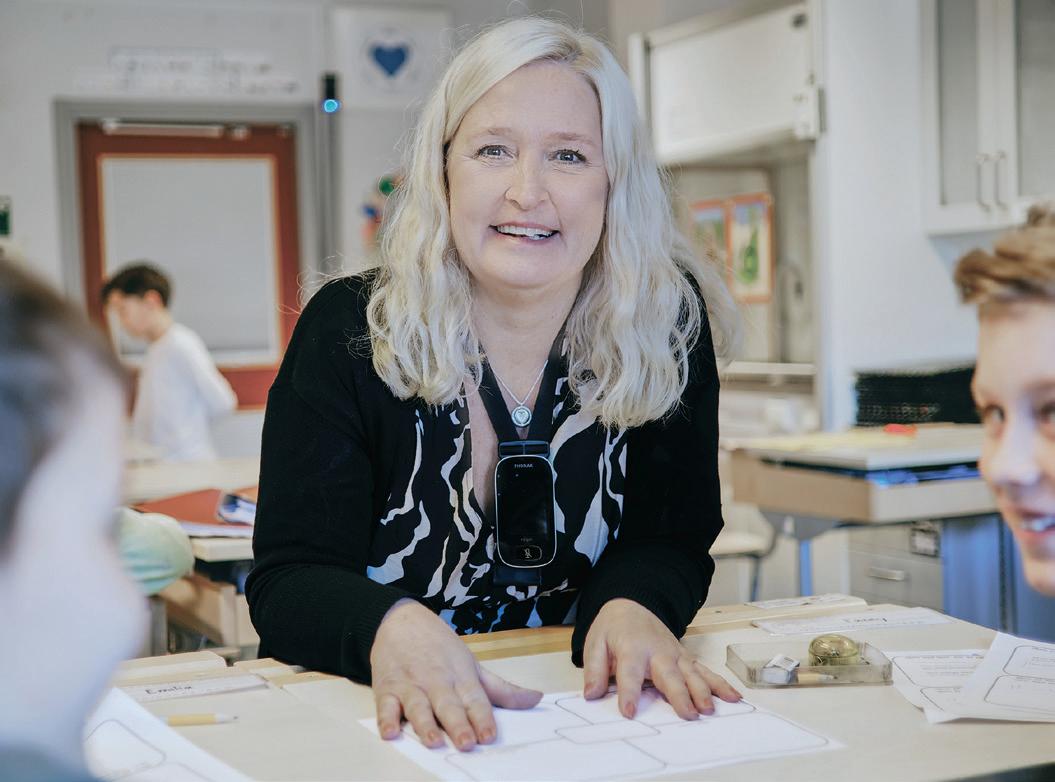
Simple adjustments could include not speaking with your back to the class if you have students with hearing difficulties, using large, high contrast fonts if you have students with visual impairment, and ensuring furniture is suitable for students with mobility aids.
Classroom design should also include practical aspects like adequate lighting and ventilation, and a variety of comfortable furniture to support different preferences
The ability to hear clearly and understand spoken language in the classroom is also essential.
Ian Riddle, Director at Hearing Loop, said a noisy classroom can become a barrier to effective teaching and learning. “The learning process becomes disrupted when students strain to hear their teacher over background noise, and teachers need to raise their voices to be heard.
“For younger children, students learning a new language, and those with hearing difficulties or attention challenges, the effects of a noisy classroom can be more pronounced. The issue can impact not only academic outcomes, but also behaviour, emotional wellbeing and classroom dynamics.”
Some solutions to excessive noise, Mr Riddle highlighted,
could include acoustic treatments, for example, installing carpets, curtains, or ceiling and wall panels designed to absorb sound. “Microphones and sound field systems can be effective in helping the teacher be heard. These systems amplify the teacher’s voice evenly across the room, helping all students hear clearly without requiring the teacher to shout,” Mr Riddle said.
“Placing students who struggle with hearing or attention near the front can help keep them engaged. Complementing verbal instructions with written instructions, clear diagrams or slides, and visual schedules can also help to support students who miss spoken information to stay on task.
“Teachers should also be supported with professional development to encourage voice care, and implement appropriate noise management strategies. This will help make sure all teachers have the tools to teach to their best, and help students to fulfil their potential.”
At times, the classroom can become overwhelming for all students—noise, smells, visual stimulus and more can create a sensory overload. Sensory regulation tools can
help students manage this, assisting them to calm down, or increase alertness when necessary. They can also be useful in enabling students to transition between tasks and maintain focus on an activity.
Encouraging all students to regularly use sensory tools will normalise these in the classroom, so no student feels singled out, and equally, so no one feels like they are missing out on the sensory fun!
Breaking up the day with body movement sensory games like animal walks, musical statues or ‘Simon says’ help satisfy the sensory vestibular and tactile input that children need, some kids more than others.
This can be complemented with routines to activate the parasympathetic nervous system, like stretching and breathing to calm music, or listening to a short story narration with a meditation music style background.
Inclusivity and accessibility should not be confined to the classroom; every area of your school must be welcoming and safe for all students. Consider, for example, washroom cubicles that include grab rails, and are wide enough to accommodate a wheelchair.
Quiet spaces should be available during recess and lunchtime for students who can experience sensory overload during these times. Importantly, students and staff should be able to navigate all areas of your school without using stairs. Wide, even pathways that are kept free of trip and slip hazards can facilitate this. Including tactile markings for people with low vision can improve functionality.
Inclusive classrooms support all learners, including those with hearing challenges.
One major, oftenoverlooked barrier to learning is poor classroom acoustics.
Background noise, echo, and teacher movement can significantly reduce speech clarity—especially for students with hearing loss, auditory processing disorder (APD), or attention difficulties.
The SoundField system is a wireless classroom amplification solution that evenly distributes clear, high-quality sound throughout the room. It enhances speech clarity for every student, not just those with hearing impairments.
Classrooms are rarely quiet. HVAC systems, hallway noise, and classroom chatter all interfere with speech.
Younger students, and those using hearing aids or cochlear implants, are especially aff ected by even low levels of background noise.
Despite advances in hearing technology, many students still struggle to hear the teacher clearly.
How SoundField works
A typical system includes:
• A microphone worn by the teacher
• One or more discreet speakers placed in the classroom
These systems use digital technology to adjust for ambient noise and deliver the teacher’s voice evenly— without distortion or feedback.
For all students
• Improved attention, participation, and comprehension
• Reduced listening fatigue and better retention
Primary students with Phonak hearing aids or cochlear implants
• Better signal-to-noise ratio, making speech clearer
• Roger compatibility, allowing direct streaming to hearing devices
• Pass-around microphones for group discussions, improving peer interaction
For students with APD or ADHD
• Easier processing of verbal instructions
• Fewer repetitions needed
• Enhanced focus in noisy sett ings
Studies show SoundField systems improve speech recognition, academic performance, classroom behaviour, and participation— particularly for students with hearing loss or learning challenges. Matching the equipment to children who have Hearing aids or Cochlear is important, so the quality of sound is not diminished or distorted to children with a devise in their ear. Teachers also report less vocal strain when they are talking 6 hours a day to the class.
SoundField is more than a tool—it’s a necessity for equitable learning. Clear, consistent sound supports every student’s success and sets a new standard for inclusive education.
For more information on how our products can enhance wellbeing in your educational institution, visit www.hearingloop.com.au or email us at info@hearingloop.com.au. Together we can make a di erence in the lives of students and educators.




Dynamic Sound Reduces Voice Strain Improves Learning Outcomes
Hearing Aid Compatible
Helps with APD/ADHD
Helping students to hear the teacher in the classroom
Keeping your audience in the loop
Let’s be honest, getting students excited about drinking water isn’t easy.
Ask any teacher, and they’ll tell you: between lunch lines, busy schedules, and sugary drink temptations, hydration often falls to the bottom of the list.
But what if there was a way to flip that script, and turn water into something kids actually look forward to?

Across schools nationwide, a quiet transformation is happening.
Where there used to be outdated fountains, there are now bold, beautiful hydration stations. Think refill-friendly, eco-conscious, and wrapped in student-inspired artwork.
They’re more than a source of water; they’re a source of pride.

It’s not just about being trendy. Staying hydrated has a direct link to concentration, energy, and cognitive performance.
According to numerous studies, even mild dehydration can lead to fatigue, brain fog, and reduced focus especially in children.
Water = brain fuel. And making it accessible, easy, and enjoyable? That’s the secret ingredient.
The real genius behind these stations isn’t just the chillers or filtered water.
It’s the artwork. Designs that reflect each school’s identity. Whether it’s Civiq designed templates, student-submitted drawings, Aboriginal artwork, with school logos, values

and thanking donors, these stations grab attention and create positive habits. When kids see something that feels like theirs, they’re far more likely to use it.
And just like that, drinking water becomes... cool.
We get it: budgets are tight. Schools juggle a long list of priorities, and every dollar must be justified.
But here’s the truth: hydration stations aren’t fluff. They’re a foundational piece of student wellbeing. Just like desks, books, or whiteboards, they support the environment where learning happens best.
And the good news? Many schools fund these upgrades through grants, parent associations, and local sponsorships. The investment pays off in better focus, healthier habits, and happier kids.
Imagine a school day where every child is alert, energised, and focused. Imagine fewer headaches, fewer afternoon slumps, and more smiles around the playground.
It starts with access. It continues with design. It thrives through pride.
We’re Civiq, and we’re passionate about taking the boring out of drinking water and making hydration something kids love. Australian owned, designed and manufactured drinking water solutions that are fully customisable with school branding, student art, and messages. All while delivering clean, safe, refreshing drinking water.
Let’s bring your school’s vision to life. One sip at a time.
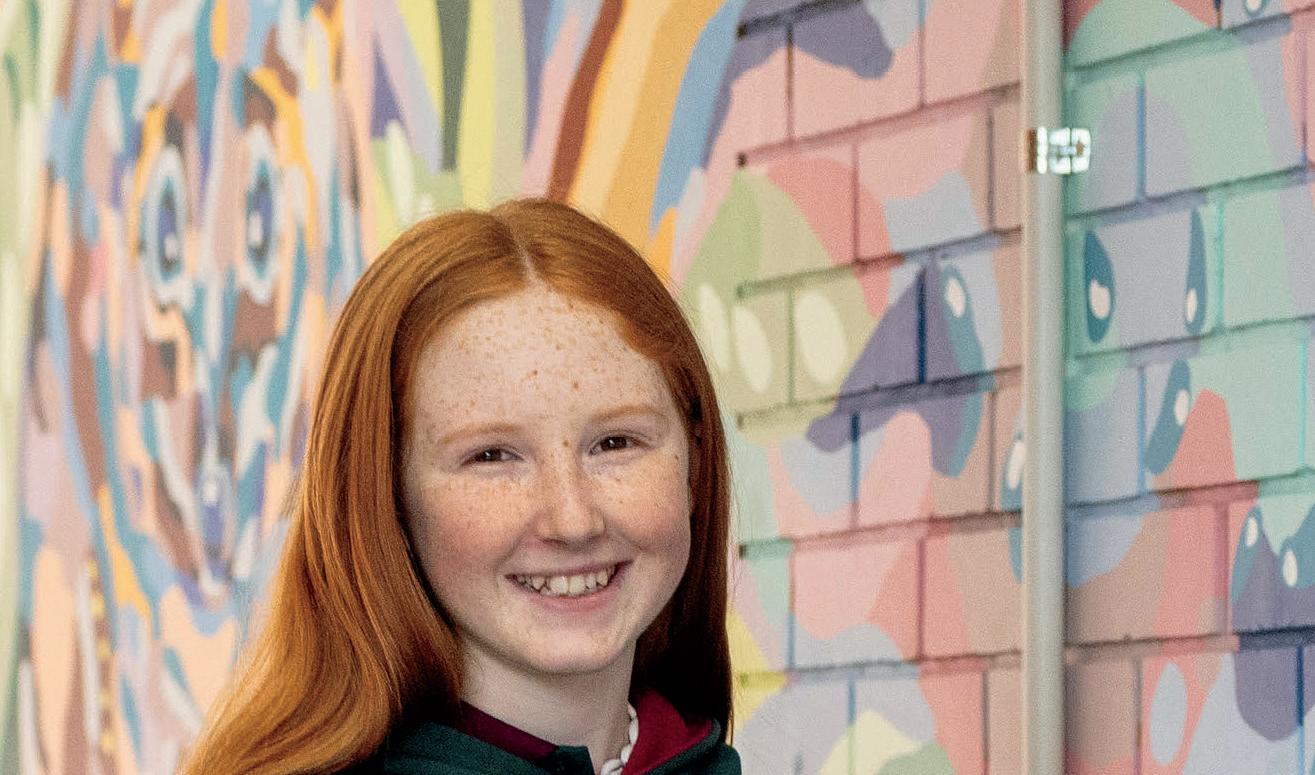









By Gemma Easton , Editor
Water is an essential nutrient for health and wellbeing.
Water is required for digestion, absorption, dissolving nutrients, thermoregulation and the elimination of waste products from the body. We require more water than our body can produce each day, which means we must drink plenty of water throughout the day.
The Australian Government recommends that school aged children drink between 1.6 litres and 2.2 litres each day. More may be needed on very hot days, or when children are involved in vigorous activity. And with much of the day spent at school, it’s important to help children drink plenty of water while at school.
Research suggests that many school-aged children do not drink enough water, and are already dehydrated when they arrive at school. A 2017 study involving 6469 children aged between four and 17 found 60 percent of children and 75 percent of adolescents did not drink enough water each day.
Staying hydrated can boost mood, improve focus and create a healthy and happy school community. Calmer classrooms and strong learning outcomes might be just a sip away.











Water can help our brains to learn, as well as our bodies to function. Research has demonstrated that even mild dehydration can lead to a drop in cognitive performance. When a student is dehydrated, the brain’s ability to concentrate, process information and recall memories declines. This can mean difficulty focusing during lessons, reduced productivity, and slower problem-solving.
One 2019 US study examined young people’s “cognitive flexibility”—the capacity to think about multiple concepts simultaneously, or to quickly




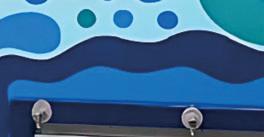



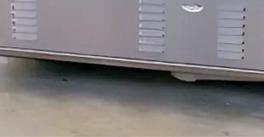

switch thinking between two concepts. Children aged nine to 11 were given diff erent amounts of water to drink over four days. Those who drank up to 2.5 litres of water over a 24-hour period were better at switching between mental tasks, compared to those who drank less.
The physical symptoms of dehydration can also impact our ability to learn. Headaches, fatigue and dizziness may mean students need to miss lessons or entire days of school. A lack of energy—a common complaint associated with dehydration—can cause irritability and sluggishness. This may lead to a low mood which could impact not just the individual, but the entire class.
To encourage students to drink water during the school day, they must have easy access to clean drinking water. Of course, your school will have drinking facilities for student use, but are these giving students everything they need? Outdated water systems often fall short of today’s standards for accessibility, sustainability and hygiene.
Old trough systems, over time, can become damaged and their functionality compromised. A bubbler that off ers only a weak trickle of water can be difficult for students to drink from. Similarly, if water from bubblers is not at a suitable temperature and doesn’t taste crips and fresh, students may bypass the water in favour of sugary drinks.
As with all areas of your school, water fountains need to be easy to clean and maintain. Some outdated water systems are difficult to clean, meaning dirt and bacteria can build up. Leaks and drips can create slip hazards.
Accessibility is essential, and old systems may include barriers that prevent disabled students from staying hydrated. Modern systems can include sensor, foot pedal or button activation, and can be installed at a range of heights for ease of use.
Your students’ drinking behaviour has also likely changed in recent years. Now, water bott les are common in many classrooms, meaning students must have facilities to refill their water bott les during the day.









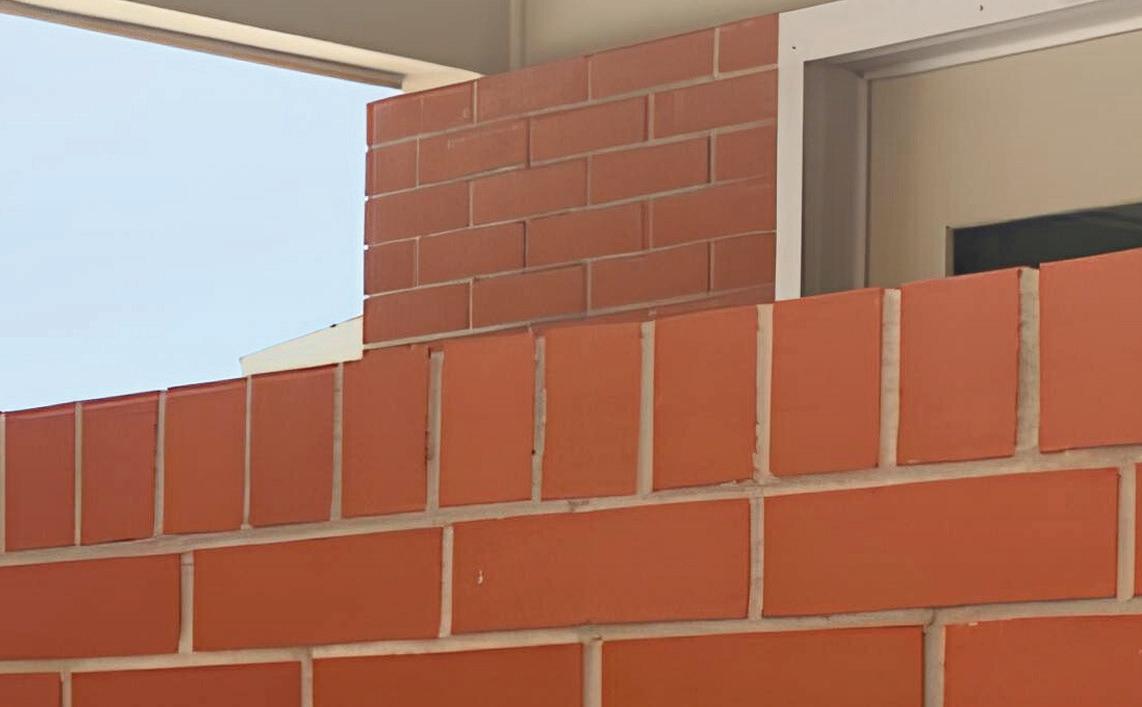





















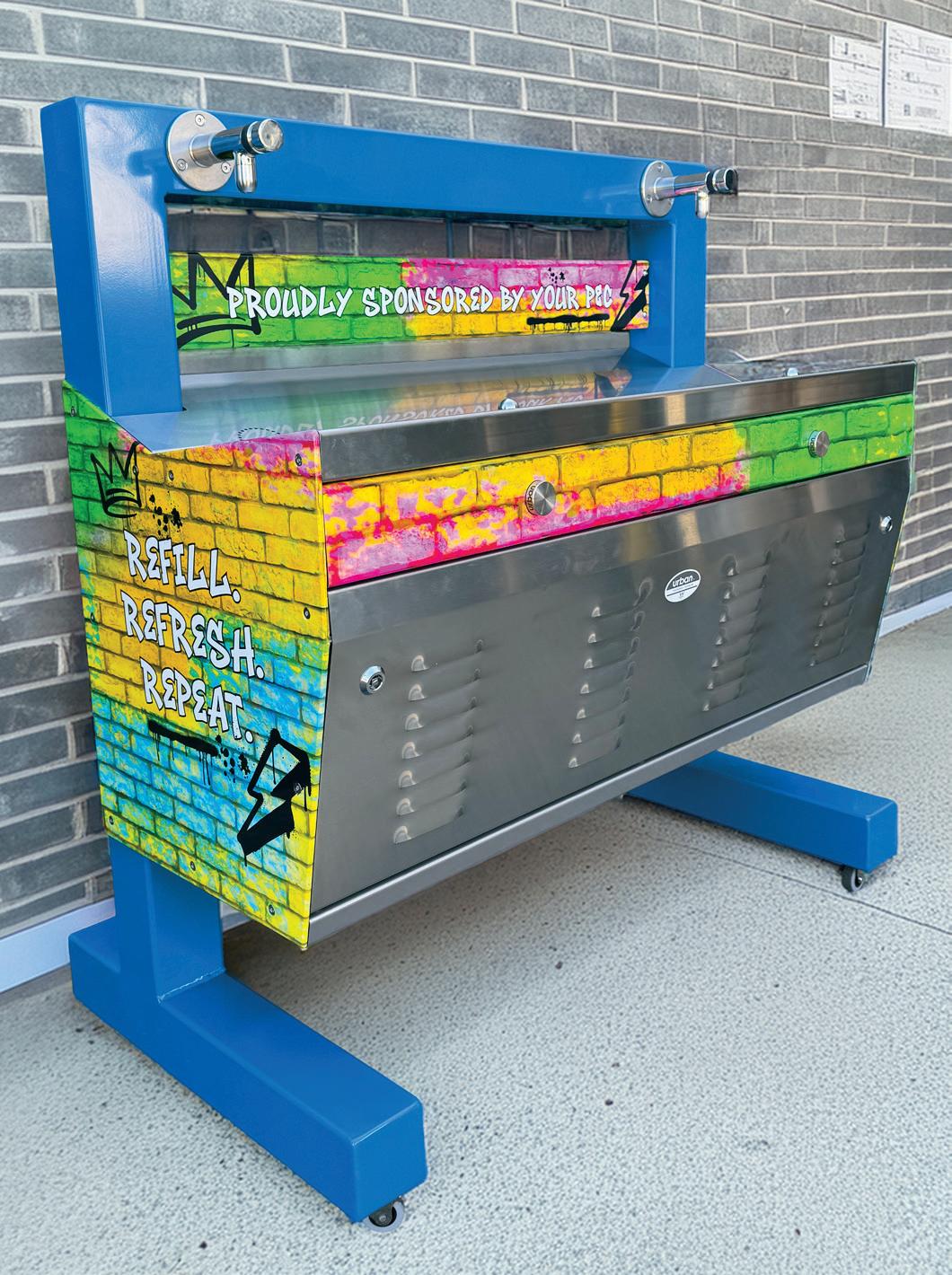
Therese Abou-Antoun from Civiq said modern drinking stations for schools are durable, safe, and easy to use.
“Models come with a range of options including bottle fillers and fountains, chillers and filters. Accessibility can be accommodated with all buttons on the bottom, and a shelf to place your drinking water bottle.
“Look for models tailored to encourage healthy hydration habits, offering both bottle refill and fountains to reduce single-use plastic.
“Some in-wall stations include a green ticker counting how many plastic bottles have been saved from landfill by refilling drink bottles. This helps students see the impact they’re having on the environment in real time.
Ms Abou-Antoun said there are benefits to installing filtration systems, which depend on your local water quality. “In areas where the water is hard or contains sediments and impurities, adding a filtration system can significantly improve taste and clarity. This can make a big difference, especially for students, as they’re more likely to drink more water when it tastes fresh and clean.
or thanking donors, school colours or graphic tweaks.
“Many schools opt to supply their own artwork, collaborating with local artists, showcasing student work, or school branding. The result? A station that’s part of your school identity.”
Claire Allan from Urban+ believes that access to fresh, clean drinking water is not just about quenching thirst—it’s about supporting student health, energy, focus, and learning every day.
young age—reducing waste and lowering the school’s overall environmental footprint.
“A particularly important development has been the increased availability of retrofit-friendly hydration systems. These are proving especially valuable in rural and remote schools, where access to trades, materials, and infrastructure upgrades can be limited or delayed.
“Teachers are always looking for ways to get students to drink more water. Artwork and personalisation help take the boring out of drinking water, not only improving student health and well-being, but making it meaningful and fun!” Ms Abou-Antoun said.
“Modern drinking water solutions can be customised with school logos and mascots, custom text like school values
“We’re seeing a big shift away from the old-school bubbler and towards more modern hydration stations. These new systems are designed to serve more students at once, with chilled water, refill points for bottles, and bubblers at multiple heights. They’re also more accessible—DDAcompliant models ensure students with mobility challenges aren’t left out.
“Crucially, modern hydration infrastructure also supports schools’ sustainability goals,” Ms Allan said. “By promoting refillable bottle use and reducing reliance on single-use plastics, these hydration stations help instil environmentally responsible behaviours from a
“Retrofit solutions are designed to integrate with existing plumbing and infrastructure, while delivering significant functional improvements. For schools where budgets are tight or building works must be scheduled around distance and resource constraints, retrofitting presents a practical and highly appealing alternative.
“Additionally, the integration of filtration systems is now seen as best practice, particularly in areas with ageing pipe networks or inconsistent water quality. Filtration not only improves taste—which significantly impacts how likely students are to choose water over sugary drinks—but also reassures parents and school staff that students are accessing safe, clean water throughout the day.”













By Naomii Seah, Industry Reporter
Instant, simultaneous school-wide communication is important for many reasons. Whether mundane, like timekeeping and community announcements, or for more urgent scenarios like emergency warnings and lockdowns, a well maintained and easy to use paging system is essential for schools of all sizes.
Currently, standard paging systems use IP software. This enables a two-way system that transmits communications over the internet. The advantages of this system include easy set-up and maintenance without the requirement for additional audio wiring. It’s also cost-effective, and user-friendly, as the signal can be broadcast from computers, phones, tablets or even the internal phone network.
An IP paging system can be wired to provide several daily functions. Bells to mark periods can ring over the system, and the sound can be adjusted. This can create a sense of identity and belonging in the school, especially if staff and
Yung Huynh, Education Solutions Specialist from Axis said network audio solutions offer smart support in three key areas. “Firstly, network audio solutions provide smooth daily functioning with clear, dependable sound for announcements, paging, twoway audio, and bell schedules.
“Secondly, network audio solutions keep schools safer and more secure. Staff know what’s happening, can respond in real-time, and can communicate clearly when seconds count.
“Third, network audio offers a great student experience, providing high-quality sound for instructional content, background music, special events, and more.”
Prolinx audiovisual director
Zoran Aleksovski outlined some key considerations for schools installing or upgrading PA systems.
“Schools should consider key factors such as system functionality (for example, emergency tones, custom messages), zoning capabilities, integration with existing infrastructure, scalability, and ease of use. It’s important to design systems with flexibility, sensitivity to audio needs, and long-term growth in mind.
“IP-based systems can utilise the school’s existing network infrastructure, reducing the need for additional cabling between buildings. In areas where network access is limited, 100V line systems may be more suitable.”
Linus Pinto from AdvanceNET recommended that schools start small and expand as needed, since IP paging and PA systems are highly modular and customisable.
“Schools can begin with a basic IP bell system integrated into their existing legacy PA infrastructure. Over time, they


can add IP speakers and expand coverage without needing a complete overhaul. This phased approach makes it both costeffective and future-ready.”
Mr Pinto said schools should consider whether the new system works with existing analogue speakers, amplifiers, clocks, or bell systems; ease of use; and looking for SIP, multicast and ONVIF compatibility to ensure smooth integration.
In case of emergency, pre-set recordings can be programmed to sound at the push of any button. The two-way system means that lockdowns, emergency warnings and other pre-recorded communications and protocols can be set off from anywhere on campus.
Specific classrooms or areas also have a direct line to the office or administration area to allow for smooth and efficient communication. This ensures that in event of an emergency, clear instructions can be provided quickly and calmly, ensuring the safety of the school community. Alarm activation, push-buttons and motion sensors can also be used to trigger prerecorded emergency announcements, enabling a stronger, more efficient and effective response.

The IP paging system can even be voice-call enabled, which means staff can transmit their voice through the system for announcements. These features allow remote control of the paging system, which means that senior leadership staff have more flexibility around initiating emergency and lockdown protocols.
Mr Aleksovski said: “In critical situations like lockdowns, fires, or severe weather, modern PA systems ensure fast and clear communication with features such as pre-recorded alerts, zonebased paging, and integration with emergency buttons and displays.
“These capabilities help enhance safety and allow staff to manage emergencies effectively through real-time updates.”
Mr Pinto added: “During lockdowns, IP paging and PA systems can provide instant alerts across campus triggered by panic buttons, access control systems, or mobile apps. Pre-recorded live audio-visual messages can help instruct the community. Zoned messaging can send alerts only to affected buildings or zones to avoid panic elsewhere. Integration with security systems means cameras, door locks, or alarms can be automatically activated when a lockdown is triggered.
“For severe weather events, systems can be integrated with weather alert services or local
sensors for real-time warnings of incoming threats like lighting, hail or high winds. Schools can program custom instructions like location-specific safety directions, for example, ‘thunderstorm warning: move to interior hallways away from windows.’ Schools can also run scheduled test drills without manual input.”
Ms Huynh said: “An IP PA solution can integrate with the school’s mass notification system, getting alerts out to the campus community quickly with smart integrations. For example, configuring a duress button in the main office or reception area to trigger a campus-wide lockdown announcement. To make live announcements, authorised individuals can use the communication hub, a SIP-enabled phone, a mobile app, or even a handheld radio. Furthermore, an intelligent IP speaker is equipped with a microphone, offering the possibility to speak directly to the scene by opening a line for two-way audio.”
IP paging and PA systems offer enhanced functionality, including the ability to set different schedules for different days. Holiday programs, parentteacher days, and PLD days can be preprogrammed into the system, enabling convenient and automated timekeeping.


An IP paging system can also be set up in zones. This may be particularly useful in large and busy schools. Announcements relevant to one group can be made in their area without disturbing others, and some schools take advantage of this technology to enhance their campus with audio, like playing music in break areas. Speakers and IP systems can be configured to accommodate students and staff who are hard of hearing, such as enabling a flickering light.
Ms Huynh said: “IP PA solution offers flexible audio zoning and content prioritisation, so school administrators can get messages where they’re needed at the right time, without unnecessarily disturbing others. And most importantly, an IP PA solution provides remote health monitoring, so schools can always be sure their IP speakers are working.”
When selecting, installing or upgrading an IP paging system, schools may want to consider scalability as part of futureproofing the network. Adding, removing or moving a speaker easily means the paging system can adapt as the school goes through infrastructure upgrades
or other changes. Schools may also want to consider adding portable systems and accessories to use offsite. These can also function as temporary or backup speakers.
“Portable PA systems are ideal for outdoor events such as sports days and carnivals, offering quick setup, wireless microphones, and rechargeable batteries. They are also invaluable during emergencies, especially in areas not covered by fixed systems,” noted Mr Aleksovski. Another advantage of the scalability of IP systems is that management and upgrades can happen in sections to minimise disruption. Traditional systems may experience widespread disruption from damage to a single unit. IP systems avoid this as it is not reliant on physical cables and wiring.
Schools may also want to look at existing technology and systems in place. Sometimes IP paging systems can be connected to existing networks, saving both time and cost and simplifying the learning curve. It is important to know whether IT providers can maintain a new system as it will operate over the internet network.

Communication plays an important role in the day-today operations in education. Whether used for activity announcements, classroom change tones, modified school schedules, calls to the office, or emergency notifications, audio is critical to a school’s ecosystem.
However, many schools still rely on traditional analog audio systems. These older “intercom” systems typically operate in a separate “silo” with litt le to no communication capabilities with other systems within the school, and are also expensive to maintain. Traditional public address systems have limited abilities or signaling capabilities to target messages or bell tones where needed, and they often disrupt learning activities. Whether to curb risky behavior, conduct safety drills, or give instructions during lockdowns, the right message at the right time and place can save lives.
Axis has been driving innovation in network solutions since 1996. We’ve built an extensive off ering of IP-based cameras, access control, audio, other devices, and intelligent analytics.

Axis public address solution is both a powerful tool on its own and a perfect complement to the other intelligent devices in our portfolio. When you choose Axis for your public address system, you get the ability to broadcast clear voice messages, bell signals, and background music everywhere you need them.
The need to broadcast messages to students and teachers throughout the school is a key function of audio in education. The ability to group or zone your announcements through Axis PA solutions brings added functionality

to public address, allowing administrators to target messages to specific areas of the school. Whether it’s an announcement for the beginning and end of a lunch period in the cafeteria, or an emergency alert to the whole school, with Axis PA it is easy to change both the zones and the content anytime, as needed.
Axis IP-based speakers deliver consistently clear audio communication, ensuring messages are heard without confusion, even
in noisy or chaotic environments. School administrators can have confi dence that Axis PA speakers are functioning properly thanks to remote speaker health monitoring, which provides real-time performance insights. Backed by a 5-year warranty the system also off ers peace of mind in terms of reliability and security. Furthermore, it integrates seamlessly with leading thirdparty mass notification solutions, including InformaCast® by Singlewire Soft ware, ALERTUS, Lynx Systems, and others, enabling a fl exible and comprehensive emergency communication strategy.
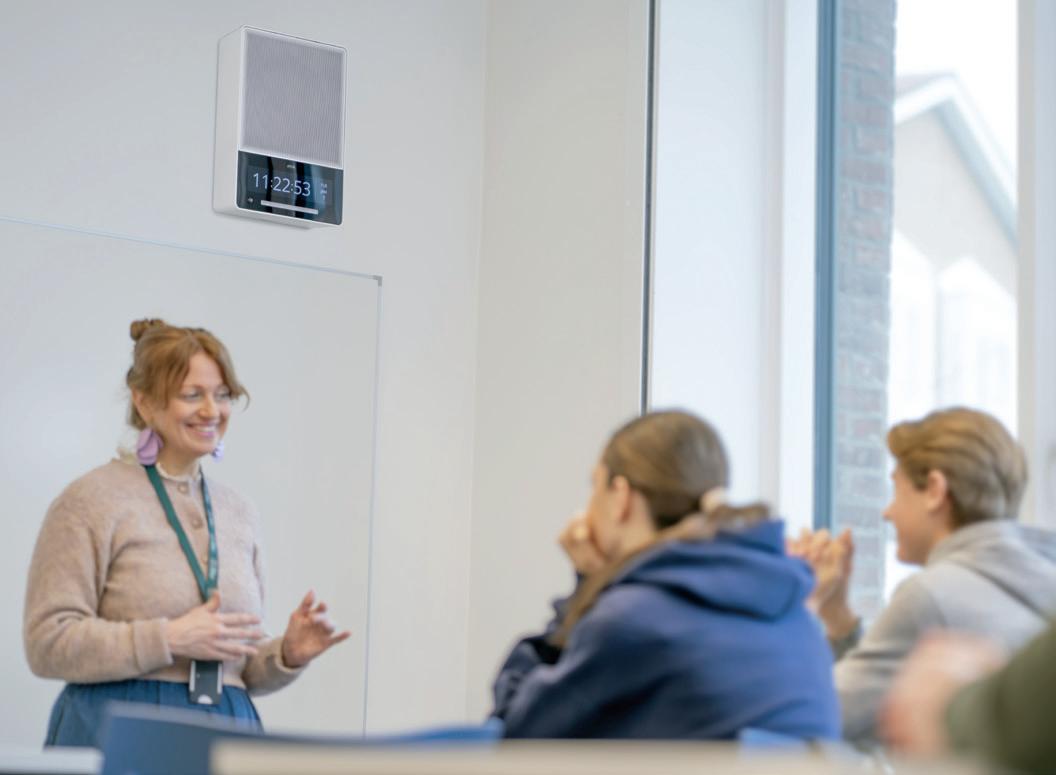

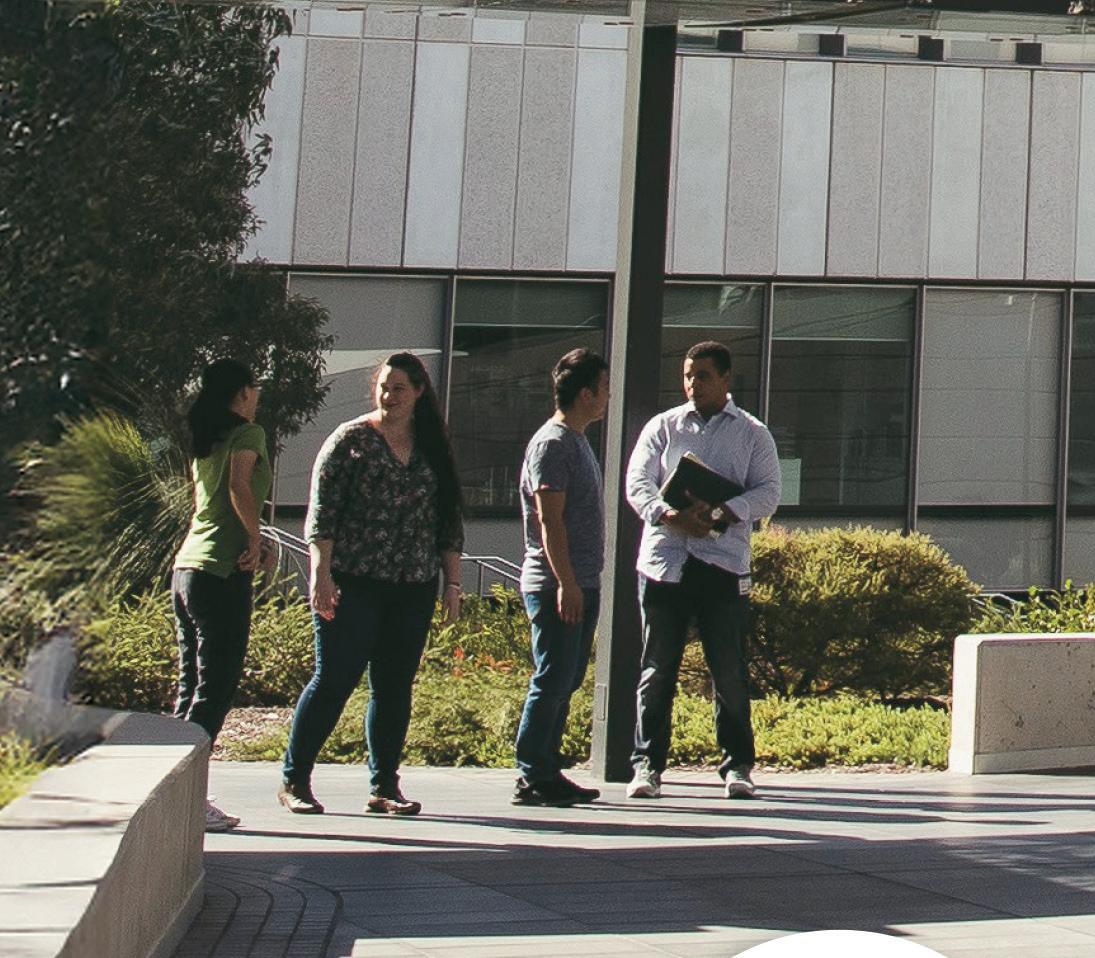

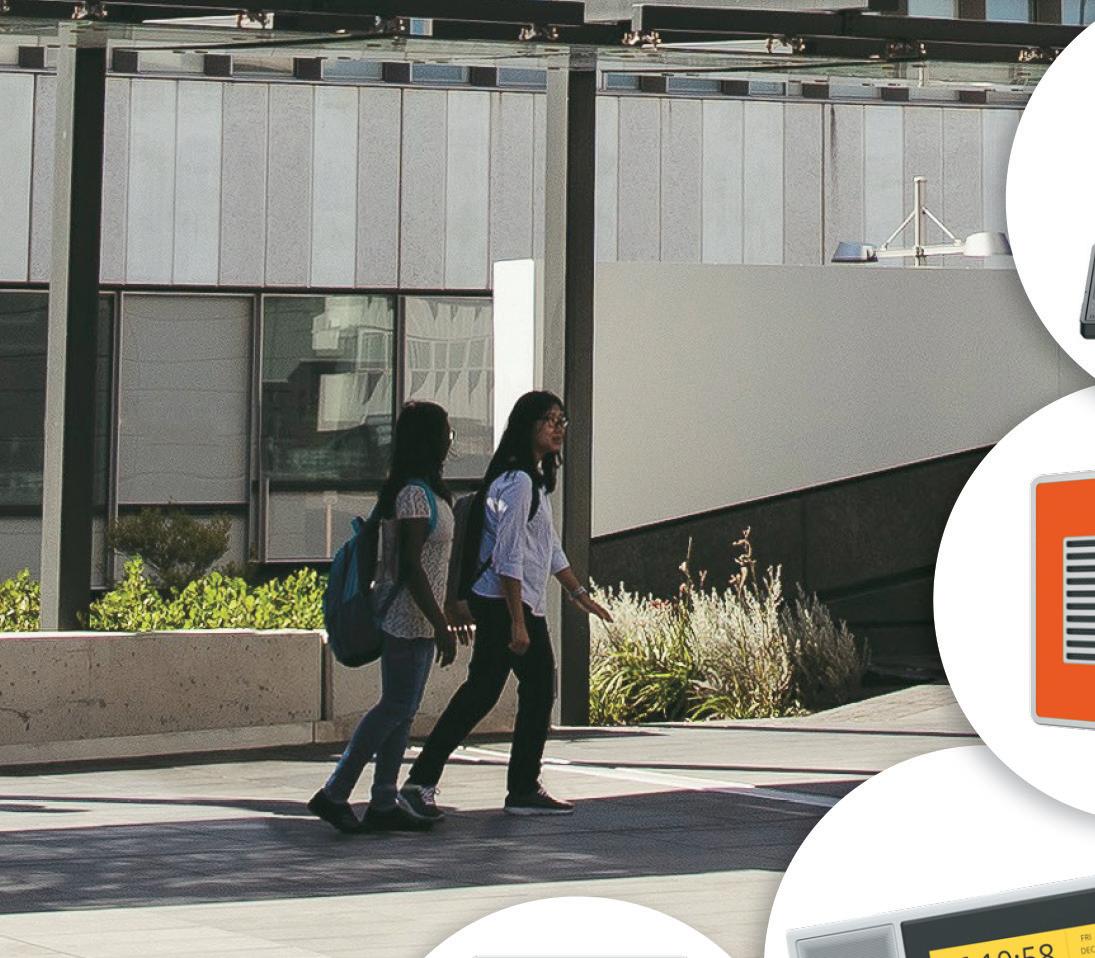




Axis PA solution, the per fect addition to your school’s daily communication and emer gency r esponse system.
Regardless of the size or complexity of your school or campus, a network public address system provides seamless
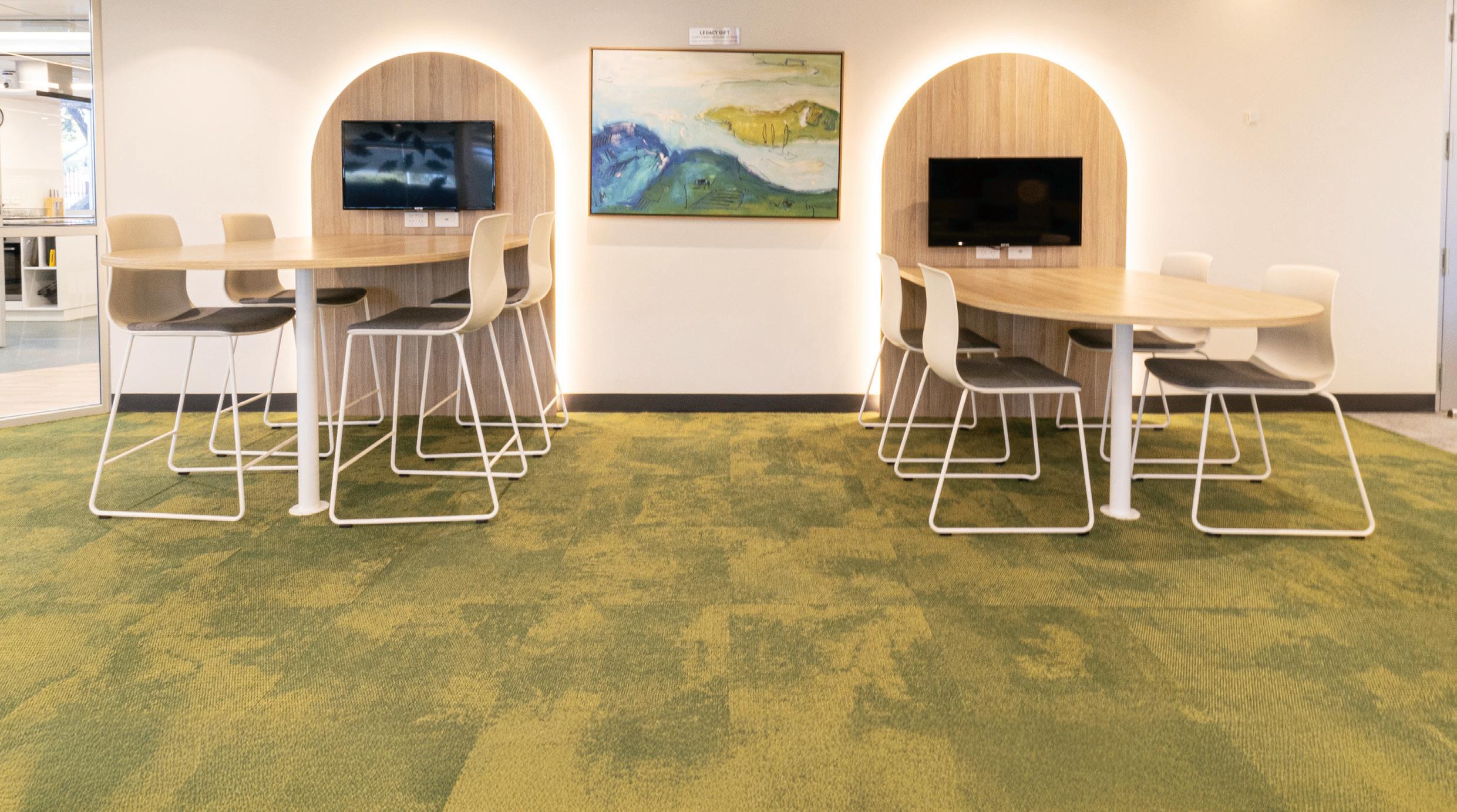


By Sarah Davison, Industry Reporter
Educators and school leaders are recognising more and more that learning doesn’t happen in a vacuum. The environment matters, and something as simple as a chair or the arrangement of a room can influence how a student approaches their work, interacts with peers, and navigates the school day.
How a classroom feels can be as important as what’s being taught—lighting, temperature,
layout and noise can all play a role in how engaged learners feel throughout the school day.
Recent research backs this up. A 2024 study published in Learning Environments Research, titled Does this chair make me look smart?, explored how flexible seating aff ected student experience in university classrooms. The results were striking. Students not only reported feeling more physically comfortable, but they were also more focused, and less anxious when they were free to choose how and where to sit.
The study also found that students were more likely to engage in discussions and work collaboratively when their seating encouraged movement and choice. For those managing anxiety or disability, flexible seating made a noticeable diff erence, highlighting the


importance of providing seating options for all students.
Meanwhile, an Australian study conducted the same year found similar patterns among primary school children. Researchers validated a new tool designed to capture students’ perceptions of their school environment and discovered a strong link between classroom layout— including seating, furniture design and room ambience— and how students felt about learning. Even the youngest learners were highly attuned to how their seats aff ected their concentration and comfort.
As classrooms continue to evolve to meet the diverse and shift ing needs of learners, flexible seating stands out as a simple yet powerful way to boost both academic outcomes and emotional wellbeing. From reducing distractions to supporting collaboration, the benefi ts are hard to ignore. Schools that prioritise dynamic, inclusive environments are not only enhancing education; they are investing in the future of their students and creating spaces where all children feel safe, supported, and ready to learn.
Industry insider Michael Merlino, Operations Manager at Resource Furniture, shared his insights.
What role does well-designed seating play in creating a productive and comfortable learning environment?
When seating is thoughtfully designed and comfortable, it can help boost concentration and collaboration, making the furniture enjoyable and inviting to use.
Moreover, well-crafted seating contributes to the overall aesthetics of the space, enhancing its appearance and functionality. This ultimately creates a welcoming atmosphere that both students and educators can look forward to being in.
Additionally, the right seating arrangements can encourage students to engage more actively in classroom activities. By providing appropriate support, they can help minimise fidgeting and distractions, allowing students to stay attentive and participate more actively in lessons.
Are there some key factors schools should consider when selecting seating for classrooms?
When selecting classroom seating, schools should think about several key factors, such as stackability and mobility. If the classroom needs to be rearranged for diff erent activities, the seating should
be easy to store away without taking up too much space or requiring too much eff ort. Trolleys can help keep spaces organised while reducing the storage footprint.
Lightweight seating options that can be easily reconfigured are essential as they facilitate a range of activities, including individual study, group lectures, collaborations, and one-on-one interactions with teachers.
Off ering a variety of seating choices—like bean bags, soft seating, stools, and traditional chairs—engages students more eff ectively by allowing them to select how they prefer to learn and move around as needed.
Additionally, it’s beneficial to choose furniture that nests well together while still allowing for flexible breakout configurations. This versatility supports collaboration and accommodates groups of various sizes.
It can also be advantageous to source furniture from the same product family to create a cohesive look and functionality that complements each

piece, even when they serve diff erent purposes. Lastly, considering the seating bases is important; ideally, these should come from the same family as well, incorporating options like sled bases, castor bases, upholstered versions, and stools.
How can incorporating furniture made from natural materials positively contribute to the classroom atmosphere?
Incorporating furniture with a variety of textures can enhance the diversity of the learning environment, catering to the needs of both students and educators.

Dida Chair

Designed to promote good posture and provide exceptional comfort throughout the school day. Exclusive to Resource Furniture.



Opting for muted, neutral tones creates a softer palette that promotes a sense of calm, as opposed to bright colours that may be overwhelming for some. Thoughtful use of materials and finishes contributes to a learning environment that feels more inviting, inclusive, and connected to the natural world.
Can educators use seating to create diff erent learning zones?
Seating can be a powerful tool for shaping how students engage with learning.
Educators can make the most of soft seating to foster
collaboration and informal learning. In contrast, furniture like pods are ideal for creating spaces conducive to focused, concentrated study.
Incorporating mobile flip or nesting tables into the classroom can significantly enhance versatility, allowing for various layouts and accommodating diff erent group sizes.
A practical choice for student seating would be lightweight options with sled bases or four legs, which are easy to rearrange while being sturdy enough to withstand frequent use.




By Naomii Seah, Industry Reporter
Recent years have seen increased awareness of the importance of wellbeing at school.
Most of us now know that looking after one’s wellbeing isn’t just a nice-to-have bonus, it is an essential foundation for success, whether academically, socially or professionally. Students with positive wellbeing learn better and are more resilient to stressors. For

teachers, wellbeing is important to ensure you can continue to show up for your students.
In the Australian Curriculum, mental health is defined as “a state of mental wellbeing in which a person can function and manage ordinary stresses.” Wellbeing is defined as “a sense of wellness and quality of life or the capacity to look after their own or others’ health, safety and relationships, including developing and maintaining a healthy relationship with digital tools.”



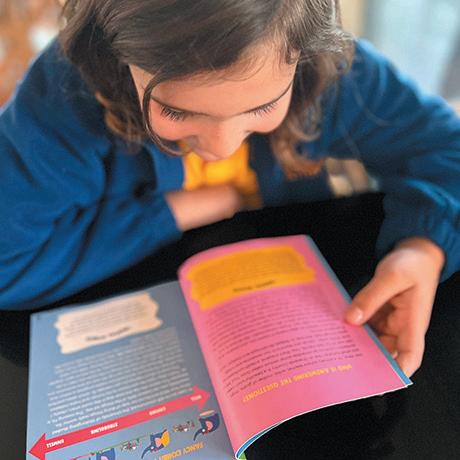

The Australian Curriculum explores health and wellbeing content across various subjects including English, Humanities, Social Sciences and Digital Technologies, as well as in Health and Physical Education.
Mental health and wellbeing’s inclusion in the Australian Curriculum acknowledges that school is a vital way that young people learn about looking after their mental health and wellbeing. Teachers are an essential part of this picture, supporting students through certain challenges they may face.
Having a positive teacherstudent relationship is associated with strong wellbeing. Additionally, because young people spend so much time at school it is often where challenges arise, which is why it is important for schools to promote positive wellbeing.
The Student Wellbeing Hub provides resources for educators on promoting student wellbeing. Some actions it recommends include

modelling strong, healthy and trusting relationships; teaching social and emotional skills; imbedding inclusive teaching practices; providing active learning opportunities; openly communicating with families and caregivers; and building positive relationships with community groups.
The Australian Student Wellbeing framework has free, self-directed online PLD programs available for teachers, schools and leaders. Various modules outline the principles of wellbeing and their contributing factors, as well as how to build personal wellbeing plans and
how to teach students skills for building resilience and forming respectful relationships.
Mental health and wellbeing interventions and support may look diff erent for children of diff erent ages. However, students of any age can also be taught appropriate coping strategies and mechanisms to help them through challenges, such as mindfulness and how to appropriately identify and communicate their feelings. Teachers can also incorporate wellbeing boosts into their daily routines to help their students develop resilience and emotional intelligence.
Educators are a vital resource in any school community, which means their wellbeing is essential. In 2023, a national survey found that almost half of Australian teachers are considering leaving the workforce in the next 12 months. The survey also found that 60 percent of teacher absences were due to a mental health or emotional problem, and over half of teachers reported moderate to severe depression symptoms.

Though these statistics paint a dire picture of educator wellbeing, there has also been research into how we can support teachers. Feeling safe, supported, valued, trusted and having an adequate worklife balance are essential for educator wellbeing according to a Monash University study. A 2021 paper from the Swinburne University of Technology found that teacher wellbeing benefited from using positive psychology. These strategies included being aware of, and using their strengths in the workplace, social support, improving workrelated attitudes and focusing on the positive aspects of the job.
Generally, workplaces that support staff wellbeing have higher retention rates, stronger loyalty and less sickness. Promoting good habits with stress and workload management are some ways to help address staff wellbeing in schools. This might look like good work-life boundaries, promoting physical activity, and having adequate professional support. Schools should look to build and maintain a culture

of wellbeing among staff and the wider community.
To successfully improve school wellbeing, a baseline should be measured. The School Wellbeing check offers a free assessment survey for educators and leaders to measure and analyse your school’s wellbeing. The questions relate to the Australian Student Wellbeing Framework. Schools can take the assessment again to track progress, and there are additional resources such as staff presentations.

Once educators and leaders better understand what wellbeing looks like in their school, the Australian Wellbeing Framework has resources available with practical examples to show how schools can lift wellbeing for the whole community. This might look like starting with guiding questions to address wellbeing gaps in your school context, and building policies and procedures to address these issues.
Besides wellbeing tools and resources available online, there are also apps and games available to help support wellbeing. These have the advantage of being highly accessible and available, for whenever they may be needed. Apps and games may be able to help guide wellbeing practices and provide short, immediate boosts for wellbeing. However, they cannot diagnose or replace other forms of wellbeing support.
For schools or educators who would like more practical, handson support for school, teacher and student wellbeing, a variety
of professional development courses aligned with the national framework are available.
Some providers shared with us how they work with schools to strengthen wellbeing for all. Books are powerful tools for building empathy and helping children see themselves and others with compassion. With this in mind, Grow Your Mind, a nationally recognised and Department of Educationendorsed wellbeing program, created ‘How to Be a Fantastic Sensational Good Enough Kid.’
The funny, relatable and research-informed book is the latest addition to the Grow Your Mind program, which also includes a curriculum-aligned online platform, an awardwinning podcast, and engaging professional development courses. After nine years of working with schools, the team continues to offer refreshing and practical resources that genuinely connect with students and educators.
The book helps children explore big ideas such as thinking traps, self-compassion, friendships and belonging, resilience and positive coping skills, and is designed to spark meaningful classroom conversations. Grow Your Mind subscribers have access to full units of work as well as shorter wellbeing activities. Currently, the program offers free teacher notes and printable student journals. The book was recently named Children’s Book of the Month across all Collins Booksellers stores in Australia and is an Amazon bestseller.

Grow Your Mind continues to reimagine school wellbeing, making it joyful, inclusive and doable for the whole community.
ThriveWise supports leaders and their teams—the central drivers of your school’s culture— to build wellbeing from the ground up. Off ering a clear pathway from individual clarity to systemic change, ThriveWise will help create an environment where everyone can flourish.
School leaders are navigating an epidemic of educator burnout alongside the complex socialemotional needs of students. In this challenging environment, leading from a place of clarity, not reactivity, is key to making a meaningful, sustainable impact. ThriveWise, specialises in helping leaders develop this capacity.
ThriveWise’s process begins with the leader. Through confidential one-to-one coaching and the scientifically-validated iEQ9 Enneagram, educators gain profound insight into core drivers and triggers. This practical wisdom helps identify your growth edges and lead with renewed purpose, particularly under pressure.
Next steps are tailored to your school’s specific context. For leadership teams, immersive workshops use the iEQ9 Team Report to map collective dynamics, building the trust and language to navigate challenges cohesively. For a whole-school shift , the ThriveWise team lead energising workshops with Cappfinity Strengths, equipping staff to manage their energy and foster a culture of appreciation.
This pathway drives meaningful culture change, empowering schools to build a resilient and compassionate community.
My Mind Check is a free, evidence-based digital tool that
enables schools to conduct brief mental health check-ins with all students. Developed by Macquarie University following extensive consultation with Australian education stakeholders, and funded by the Australian Government, the platform empowers schools to proactively identify and address wellbeing needs before challenges escalate.
Through supervised 10-to-15minute check-ins, schools gain real-time insights into their students’ mental health and wellbeing from Foundation to Year 12. The platform’s streamlined traffic light system helps educators quickly identify students who may benefi t from additional support, while providing immediate access to curated resources for both educators and families.
My Mind Check is purposefully designed to build teacher confidence. Teachers aren’t expected to become counsellors or receive extensive wellbeing training. Instead, the platform provides clear guidance on when and how to connect students and families with appropriate support, sharing the responsibility for student wellbeing.
Schools receive comprehensive implementation guides, action plan templates, and communication frameworks that complement existing wellbeing strategies. This creates natural opportunities for meaningful conversations between students, families, and educators when needed, fostering a collaborative approach to youth mental health that benefi ts entire school communities.
The result is a manageable shift that strengthens schools’ existing frameworks while ensuring no student slips through the cracks.






By Daniela Falecki, Educator, Speaker, Coach, Teacher Wellbeing

The conversation about teacher wellbeing continues to be reactive, focused on crisis management rather than meaningful prevention. Too often, initiatives are framed as optional add-ons, well-intentioned yet ultimately superficial, rather than integral to the fabric of our schools.
This reminds of a powerful health promotion metaphor we teach students that highlights this gap: we have been resourcing the ambulance at the bottom of the cliff instead of building the fence at the top. In other words, we have focused on responding to burnout and exhaustion after the damage is done, instead of investing in strategies that prevent harm in the first place. It is time to shift this narrative. The science has changed; requirements have been revised and what we used to do doesn’t work anymore.
practices, and a culture of compassion where seeking help is normalised and supported.

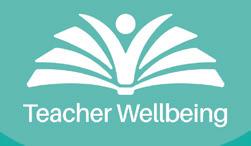




The Montague Integrated Model of Wellbeing at Work (Montague et al., 2020) provides a comprehensive framework to guide this transformation. Rather than treating wellbeing as a single program or initiative, this model highlights three interconnected areas that schools must invest in to foster sustainable teacher wellbeing:
This area addresses the structural and cultural factors that contribute to stress and disengagement. It involves creating psychologically safe workplaces where teachers have role clarity, manageable workloads, and supportive relationships. It means tackling the root causes of burnout, not just treating the symptoms.
Recognising that teaching is inherently demanding, this area ensures that eff ective and accessible support is available when teachers experience mental health challenges. It involves early intervention, evidence-based
Beyond addressing harm and illness, this area emphasises the importance of cultivating positive psychological resources. It involves fostering purpose, belonging, and growth— enabling teachers to flourish rather than merely survive. When schools address these three areas in an integrated way, they move beyond piecemeal solutions towards building truly healthy, thriving workplaces. They create an environment where teachers feel safe to express their needs, where their strengths are recognised, and where they have the energy and agency to continue making a meaningful diff erence.
Let’s be clear: building the fence at the top of the cliff is not a luxury—it is an essential investment. By shift ing our focus from reactive measures to proactive strategies, we can create a future where teacher wellbeing is not an afterthought, but the foundation for everything else in our schools.
Afterall, student wellbeing begins with teacher wellbeing.
References
Montague, A., Burgess, J., & Connell, J. (2020). Integrated approaches to workplace mental health: An Australian perspective. Asia Pacific Journal of Human Resources, 58(3), 311-330. htt ps:// doi.org/10.1111/1744-7941.12255
Parker, S. K., & Jorritsma, K. (2021). Good work design for all: Multiple pathways to making a diff erence. European Journal of Work and Organizational Psychology, 30(3), 456-468. htt ps://doi.org/10.10 80/1359432X.2020.1860121


By Gemma Easton, Editor
EDUtech 2025 brought the education sector together in Sydney on 11 and 12 June for two incredible days of insight, innovation and inspiration.
With thousands of passionate educators, leaders, and technologists onsite, the event buzzed with fresh ideas from keynote sessions and a dynamic expo floor featuring hundreds of edtech solutions and startups. More than 10,000 attendees heard from 345 speakers, with 253 practical sessions. Returning to EDUtech in 2025 after a highly regarded address in 2024, Sal Kahn, Founder and Chief Executive Officer at Khan Academy, headlined the event, providing insights on AI in education.
Key themes across the two days included wellbeing, differentiated learning and inclusion, school operations, and edtech innovation.



Much more than just speeches and presentations, the event provided a hub for collaboration and conversation. Educators and school leaders joined hands-on demonstrations from industry professionals, and shared insights from some of the world’s foremost educational leaders.
Attendees visiting the free expo floor embraced opportunities to learn and gain insight from the free content on offer, evaluate new products and services side by side, meet and connect with existing suppliers, and establish future business opportunities.
Those attending paid sessions earned qualified PD; received practical advice from experts on how to improve teaching and learning; gathered information about technologies, methodologies, policies and opportunities; and were inspired and motivated, leaving with advanced knowledge.
Feedback from the event has been overwhelmingly positive. Visitors have praised the key
presenters and panellists, as well as the interactive sessions, and were impressed by the diverse range of presenters and exhibitors. The opportunity to try products firsthand, and speak to the product designers and experts helped attendees find new innovations for their classroom, and reevaluate how they’re using some of their current tools for education.
With everyone in education and technology in the same place for two days, guests had an unprecedented opportunity to network with like-minded professionals and explore the latest trends in technology. The EDUtech app keeps attendees connected long beyond the expo floor, helping to establish meaningful, long-lasting relationships.
With more than 200 exhibitors across all facets of education, EDUtech is the ultimate destination for teachers, school leaders, decision makers and education change makers wanting to stay ahead of trends, develop and enhance



their teaching practice, and grow their networks.
EDUtech spans the entire learning cycle, from K to 12, Higher Education, and Vocational Education. The event is relevant to all roles within the education sector, including school leaders, department heads, curriculum leaders, teachers, business managers and more. Welcoming people from across all sectors— public, independent and Catholic—EDUtech remains proudly independent, neutral and agnostic. This makes it the ideal place to meet, discover, learn, evaluate and purchase the latest educational products and services.
With technology, AI and the edtech space moving at lightning speed, staying across current trends is more important than ever.
Planning for EDUtech 2026 is already underway, and it promises to be bigger, better and more valuable for educators than ever.


By Sarah Davison , Industry Reporter
A trip to the zoo offers much more than a break from the classroom; it delivers a rich, immersive educational experience that fuels students’ curiosity, supports their personal and academic development, and deepens their understanding of the natural world.
From the moment students step through the gates, their senses are engaged and their imaginations awakened.
Zoos and wildlife parks provide
the freedom for children to explore and learn at their own pace. As they move between exhibits, ask questions, and share observations with peers and educators, students are physically, intellectually, and emotionally engaged. These experiences not only support education but also foster creativity, empathy, and connection with the natural world.
Importantly, the learning goes far beyond casual observation. Many Australian zoos now offer structured educational programs designed to extend and deepen student engagement. Aligned with the Australian Curriculum, these programs cater to a broad range of year levels and learning needs. Whether students are investigating ecosystems, identifying
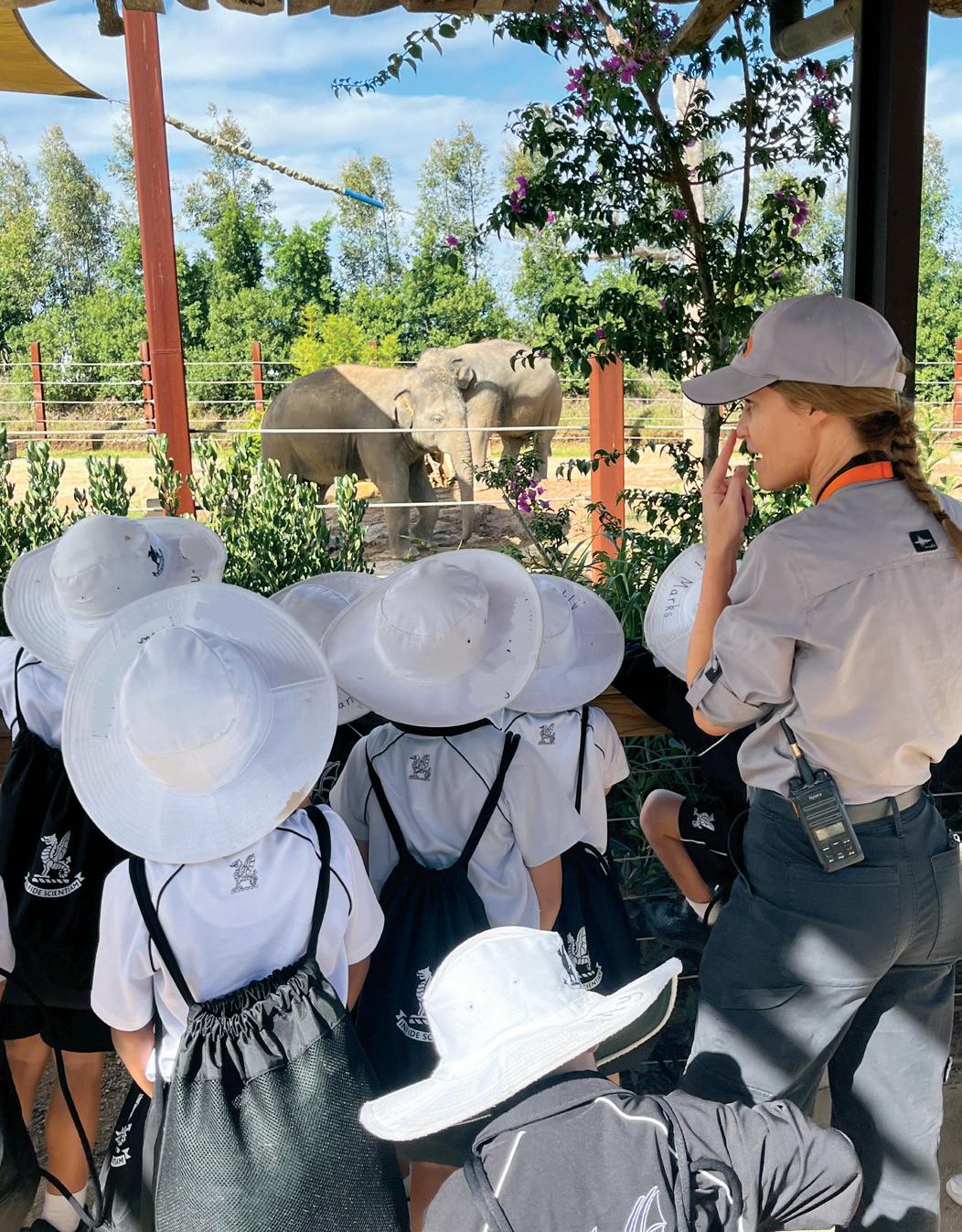
animal adaptations, exploring food chains and food webs, or learning about Aboriginal knowledge of land and wildlife, these sessions bring classroom concepts to life in meaningful and memorable ways.
Research has found that educational outcomes are enhanced by the structure of zoos, where education and entertainment are merged. Stimulating, interactive
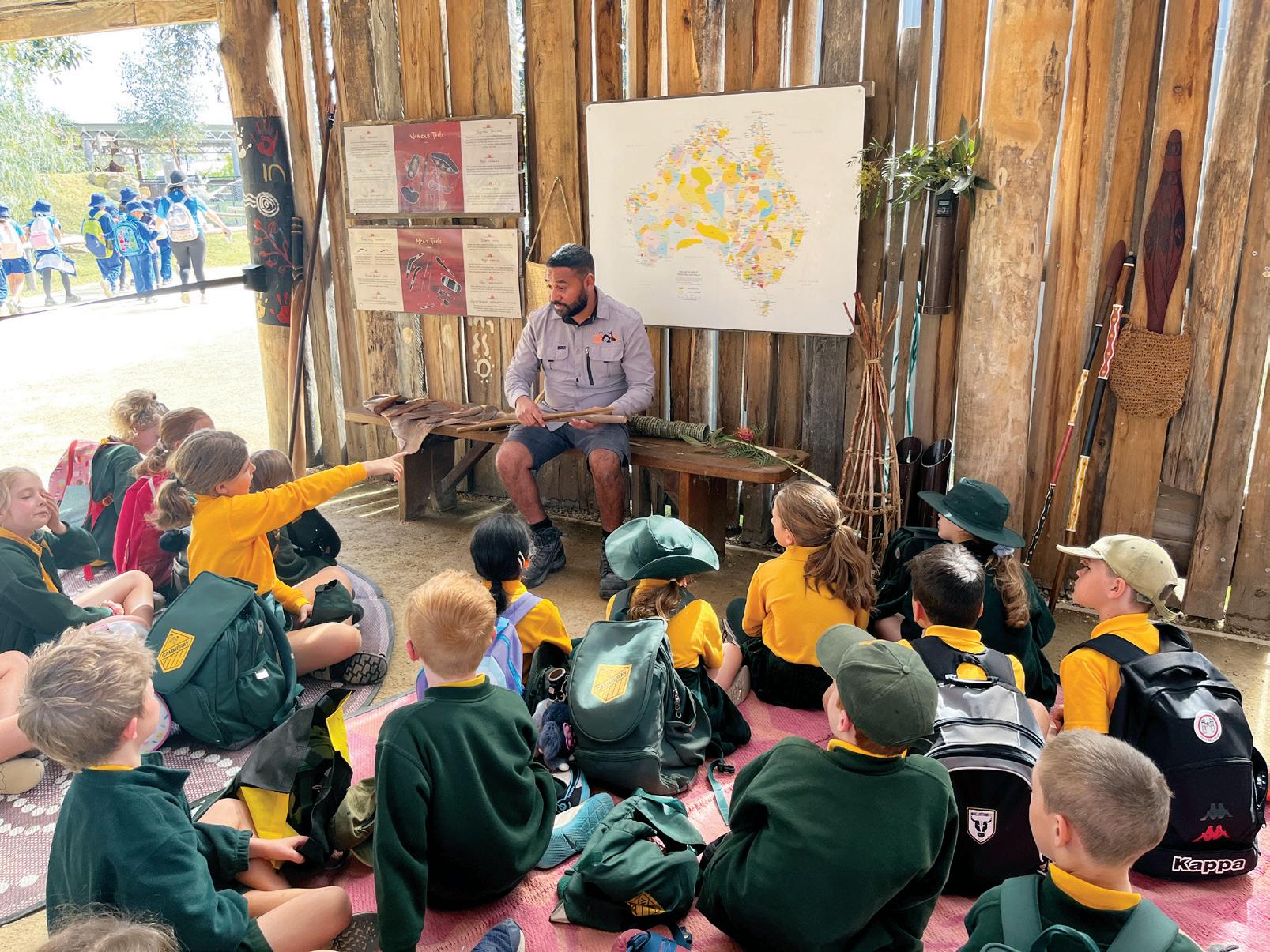
environments, zoos and wildlife parks show students that discovery is exciting, and learning is an adventure.
Similar to other informal learning environments like museums and galleries, zoos and wildlife parks encourage unstructured exploration, and give students agency over their learning. Left to explore the space on their own, students seek out exhibits which interest them, and form inquiry questions for further investigation. Conversations with educators, either at the zoo or in the classroom, can help reinforce this independent inquiry.
With environmental challenges growing, zoos and wildlife parks have a vital role to play in shaping the next generation of changemakers. Through handson learning, guided experiences, and curriculum-aligned support, they are not just teaching young people about the natural world—they are empowering them to protect it.
Since opening in 2019, Sydney Zoo has developed an exciting and diverse suite of over 30 curriculumaligned programs with wildlife conservation and sustainability education as a focus.

The programs are designed to engage students from Kindergarten through to Year 12 and connect students with realworld conservation issues while encouraging active participation in environmental stewardship. Notable examples include the
Stage 2 Caring for Country program, which explores First Nations knowledge systems and contemporary threats to the eastern long-necked turtle in Western Sydney, led by First Nations educators. For senior secondary students, programs
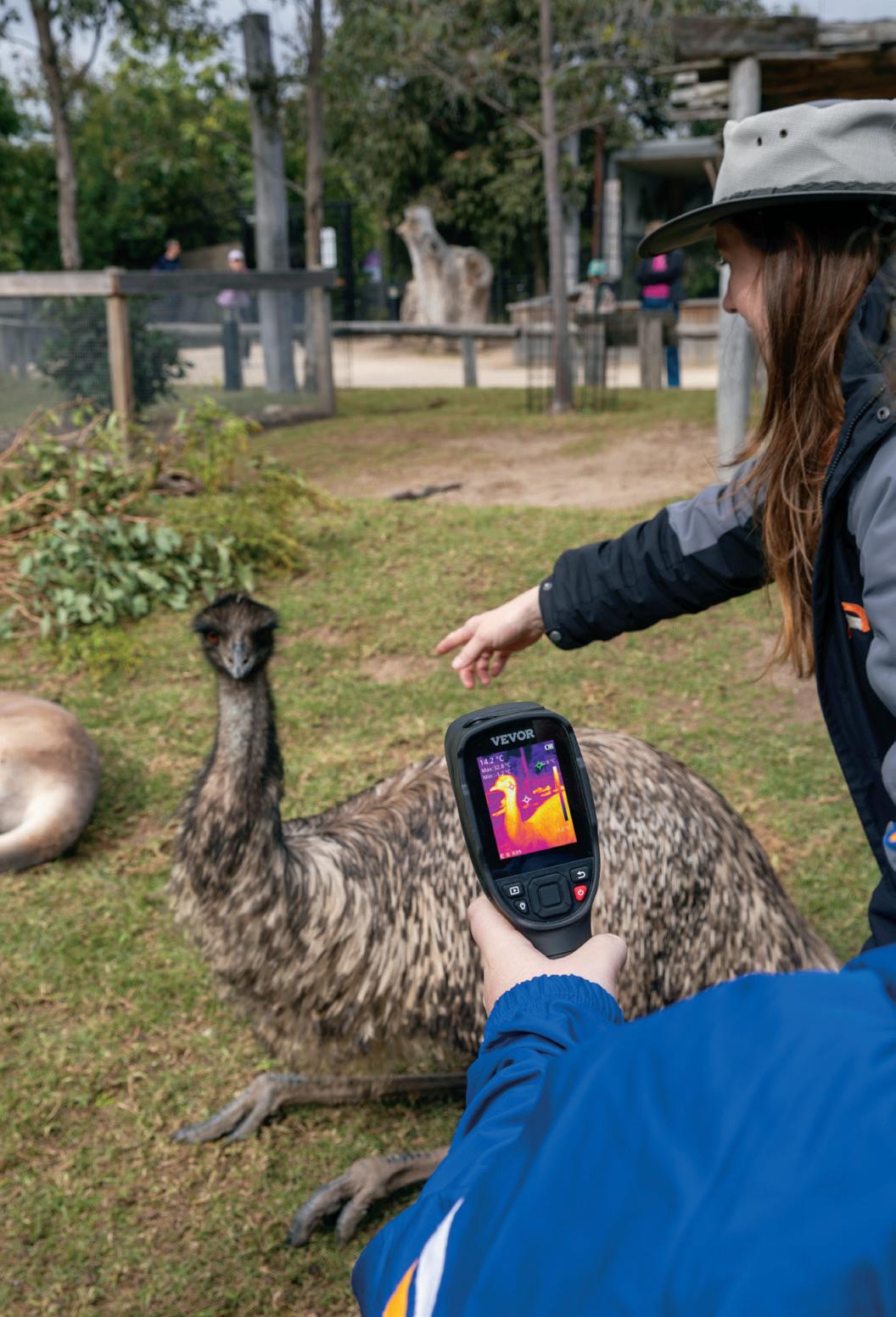
including the Stage 6 Biological Diversity provide opportunities for in-depth exploration of global species adaptation and survival in the face of ecological change.
Sydney Zoo offers an inclusive and accessible learning environment where students
can engage directly with wildlife, technology and First Nations culture through immersive, hands-on experiences that extend and enrich classroom learning while cultivating a deeper connection to the natural world.

Book your next school excursion to Sydney Zoo, Eastern Creek, and experience learning like never before!
With over 30 engaging, syllabuslinked programs, students can get hands-on across the whole zoo—meeting animals up close while exploring key curriculum outcomes. From Biology to Business Studies, Geography to the Living World, all programs are created and delivered by qualified teachers to spark curiosity and deepen understanding.
Students can also take part in powerful First Nations education, delivered by First Nations educators, focusing on culture, art, history, sustainability and caring for Country.
Every visit to Sydney Zoo supports a deeper understanding of conservation, sustainability, and the real-world impact of environmental education.
Give your students the ultimate outdoor classroom—where wildlife, wonder and learning meet.
Spots fill quickly — book your excursion today at www.sydneyzoo.com/education

By Naomii Seah , Industry Reporter
Well-designed outdoor spaces in schools can encourage students to spend more time in nature and fresh air, which in turn can promote physical health, socioemotional regulation, social skills and friendships.
Besides outdoor play and break areas, many schools are installing outdoor learning environments designed for all-weather use. Research has demonstrated that children with disabilities may even learn better when working in outdoor classrooms, and some individuals who find traditional indoor learning

Work with a manufacturer that is passionate about sustainability
difficult may be more engaged when learning outside.
This means it’s important that outdoor spaces are inclusive. Many states have inclusive design guidelines, which recognise that access to the outdoors may not be equitable. This is more than just ensuring accessibility for those with mobility needs—a
truly inclusive environment considers all needs, including potential cultural and sensory obstacles and barriers.
Important factors to consider when designing outdoor environments include the age group, accessibility, and the type of learning that the outdoor space will facilitate.
For industry insights into outdoor classrooms and furniture trends, School News spoke with Lindsay Stead from Astra Street Furniture
How does inclusive outdoor furniture design ensure all students can participate in learning, play, and social interaction outside the classroom?
Lindsay Stead: Creating outdoor spaces that are inclusive and accessible to everyone is essential for ensuring that all students are welcome, regardless of their abilities, and can enjoy and participate in activities outside the classroom.
Features of inclusiveness to consider for outdoor furniture include adequate space for circulation, and a range of seating types and locations.

Schools should also consider installing “buddy benches” and circular seats, or four-sided table settings to encourage inclusive socialisation. Seat heights should be adjusted for different ages. Backrests or armrests should be considered, but in some cases benches without backrests may be more inclusive to allow students to face either way.
Pathways should be wheelchair accessible, and table settings should have wheelchair allocated spaces with considered positioning. For instance, does the wheelchair need to be positioned at the end or side of the table, and will a carer need to be on the left or the right of the wheelchair to
suit the student’s learning style?
Bright colours or printed graphics may be welcome to make the space inviting. Platform style benches can facilitate more casual learning and playing, and shelters or shade umbrellas should be employed for students with sensitive eyes. What materials are on offer to align with a school’s sustainability goals?
Lindsay: To help meet sustainability goals, schools should consider the six pillars of sustainability when specifying outdoor furniture. These include: Australian made; recycled content; life-cycle expectancy; repurposing;

carbon star ranking; and carbon content score.
To make it easier, it is recommended that schools choose to work with a manufacturer that is passionate about sustainability and incorporates recycled content in every furniture component. This can include materials like recycled composite slats, aluminium, and steel.
How do schools ensure furniture is durable and robust to withstand Australian weather while maintaining safety standards?
Lindsay : We recommend that outdoor furniture is manufactured here in Australia from high-strength materials
like aluminium and steel, and finished in premium Australian powder coating to withstand the harsh Australian climate. Plain or woodgrain aluminium is maintenance free, easy to clean and high strength, making it the ideal material for the school environment. Steel frames offer strength and stability, and can withstand the rough-and-tumble play of students, while offering a secure and stable seating option. However, it’s essential to ensure that steel furniture is properly treated and finished to prevent rust and sharp edges. Items should be designed for strength, and slats should not be over-spanned between supports.




By Gemma Easton , Editor
Centres of fun and learning, playgrounds support children’s physical, emotional, social, and cognitive development.
All children deserve access to safe, age-appropriate play equipment and spaces, so it’s important that your school playground is inclusive and accessible. True inclusivity
means going beyond minimum accessibility; playgrounds should cater for students with physical disabilities, as well as those with hearing or sight impairment, developmental diff erences or neurodivergence, for example, autism or dyslexia.
Cultural inclusion should also be considered. Looking within your own school community and broader neighbourhood is a great starting place to develop cultural inclusion.
Yarning circles, gardens with



A
native plants, and totems acknowledging First Nations’ Peoples can all be integrated, as well as elements from other significant or well-represented cultures in your school.
Importantly, playgrounds should off er students the ability to play beside each other, sharing experiences and building memories; a safe, happy place where diff erences in skill and ability melt away.
Playgrounds are a great place for children to develop physical fi tness and gross motor skills. Diff erent equipment can give children opportunities to build strength, coordination and agility. Climbing, reaching, pushing and crawling all work young muscles and help to build strong bones.
Similarly, playgrounds form an important part of children’s social and emotional development. Here, students can interact with others outside of their usual social circle, helping to build communication skills and confidence. Imaginary play, like unstructured play enjoyed in a playground, helps children imagine or try out diff erent roles and activities of life. This can help them to think about things from diff erent perspectives, and adjust their own world views. When planning your playground, consider the ages and abilities of students who will use the space—inclusive playgrounds meet children where they are, and also off er challenges for students to work towards.











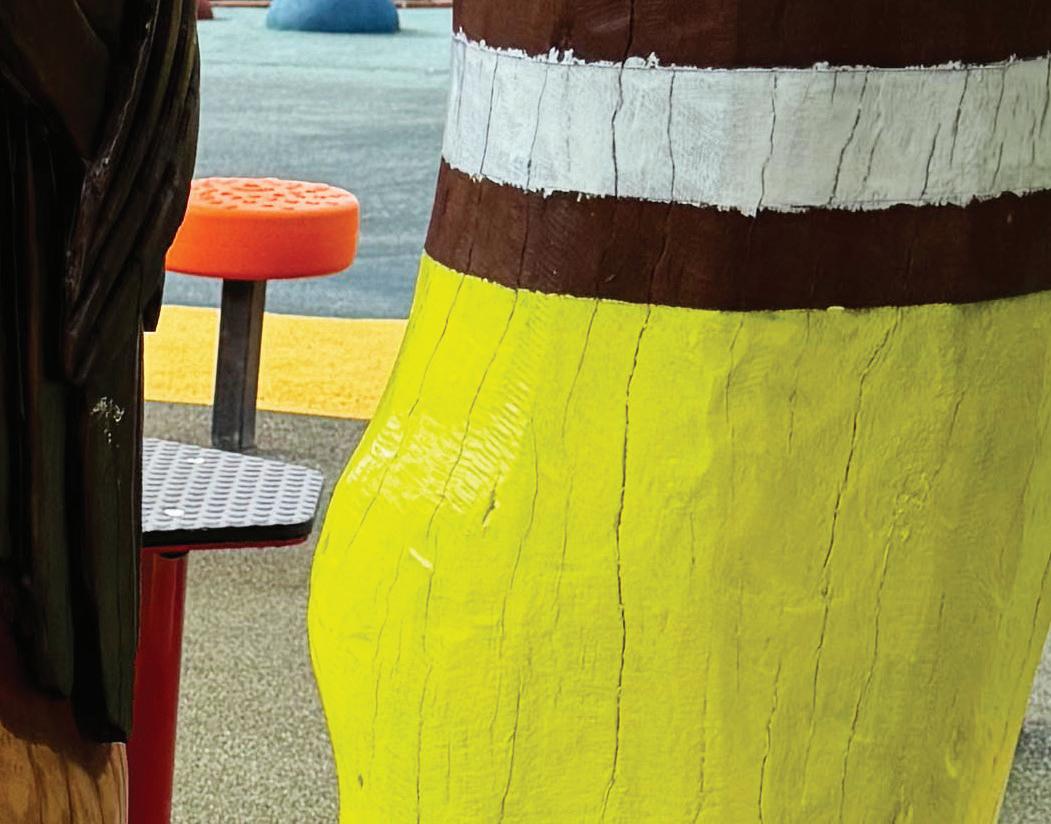











For longevity, look for equipment that children will not easily outgrow or become bored with. Including options for ground play and activities at waist height can improve inclusivity.
Children on the autism spectrum and those with some physical disabilities can benefi t from training their sense of balance. Using equipment like carousels and twisters can enhance their ability to play and live more independently. Swings can also help children with balance, and a range of adaptive swing seats are available in diff erent lying and seating options. Some are designed to be used alone, while others have space for several children to use the swing at the same time.
Accessible equipment shouldn’t be segregated, but incorporated proudly into the playground, and all students encouraged to try it out. Some equipment is designed to be used independently, while other items are designed for the user to be assisted at first, with the goal of independent use long-term.
And while the playground is generally the kids’ domain, staff will also benefi t from an inclusive playground design. Supervision of play spaces by teachers who live with disability, or have a temporary condition, like a broken leg, becomes much easier when spaces can be accessed and shared by all.
Glenn Williams, Managing Director at Austek Play, said when creating a new play space, designers should work closely with the school community to understand what’s needed, now and in the future. “Think about the layout and natural features of the site, as these can be used to enhance the design. Practical factors like how easy it is to get to the playground, how construction and maintenance will be handled, and how close it is to nearby classrooms and homes also need to be considered.
“A great playground provides challenges that grow with the children, helping them stay engaged as their skills develop. It’s also important to design areas that promote social interaction, while still off ering quieter zones for children who
may need a break from sensory stimulation. For example, double slides are a popular choice because they let two children play side-by-side, turning a solo activity into one that can be shared with a friend.
“Adding diff erent textures and colours can make a playground more exciting and inclusive,” Mr Williams said. “Using a mix of materials—like sand, rubber, synthetic grass, bark, timber, and natural stone—not only
makes the area look more interesting but also off ers a variety of sensory experiences. This can be especially helpful for children with sensory processing needs, such as those on the autism spectrum.
“Sensory panels are another great feature; they support both independent and group play and have become one of the most popular playground additions in recent years.”



















































































































































































































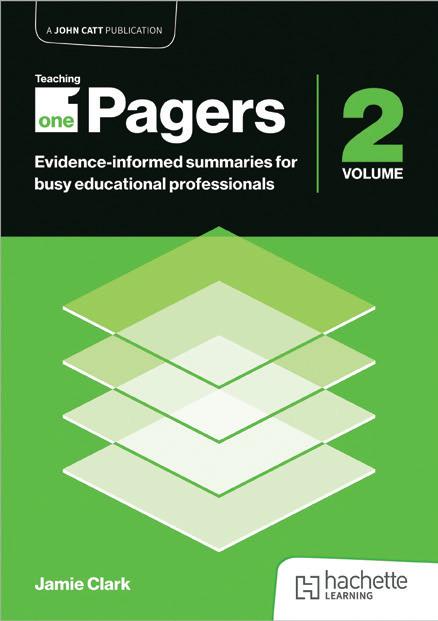














Be empowered this term with Teaching One-Pagers 2, the newest instalment from Australian educational powerhouse Jamie Clark. His concise summaries of key educational research allow busy teachers to engage in wider reading and refl ect on their practice. At Woodslane, we have been representing local and international publishers and authors in the education space for over 30 years, providing educators with insightful resources to help them reach their teaching potential. Need ideas for lesson plans or building relationships with students? Browse our selection of educational titles and use code SN15 for 15% o your order and start transforming your teaching.








Owning your own portable stage for school events has never been easier! Transtage portable stages are designed with schools in mind—lightweight, robust, and easy to set up without any special tools or training. Whether it’s a school assembly, performance, or guest speaker presentation, our modular stage systems offer the flexibility to configure any size or shape to suit your space. All decks pack down compactly for easy storage and transport. With Transtage, you can elevate your event wherever and whenever needed. Invest in a long-term solution that saves time, effort, and cost. Enquire today for an obligation-free quote!
C Transtage P 1300 712 066
E info@transtage.com.au W www.transtage.com.au
C Woodslane Education P 02 8445 2300 E education@woodslane.com.au W woodslaneeducation.com.au
Meet the CF400 by Urban+ — Australia’s go-to school hydration station. This all-inone bubbler and bottle refill unit is built to handle the daily demands of busy school environments. Choose from wall or floor-mounted options; 1, 2, or 3 tap configurations to suit any space or a DDA-compliant basin. Customise with school logos, student artwork, and over 100 Dulux powder coat colours. With a built-in chiller unit, filtration, and a vandal-resistant design — it’s a no-brainer for schools looking to upgrade
C Urban+ - making life better P 07 3382 7372
E office@urbanff.com.au W urbanff.com.au
Astra Street Furniture is proud to launch the new Spencer Circular Setting, available in both single and double configurations and 7 different colours. Designed with inclusivity and flexibility in mind, its circular layout encourages social interaction and collaborative learning—perfect for schools and public spaces. Made with durable materials and low-maintenance finishes, the Spencer Setting combines practicality with modern style. The double version offers expanded seating without sacrificing flow or space. Manufactured from heavy duty steel and supplied with a 1-week lead time, it’s an ideal addition to any outdoor learning or recreational area.
C Astra Street Furniture P 1300 889 821
E sales@astrastreetfurniture.com.au W astrastreetfurniture.com.au
